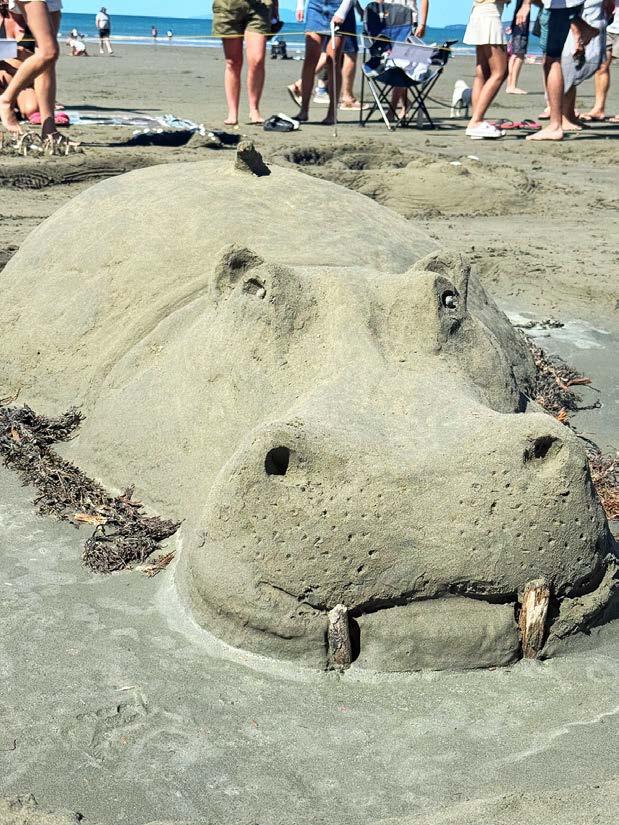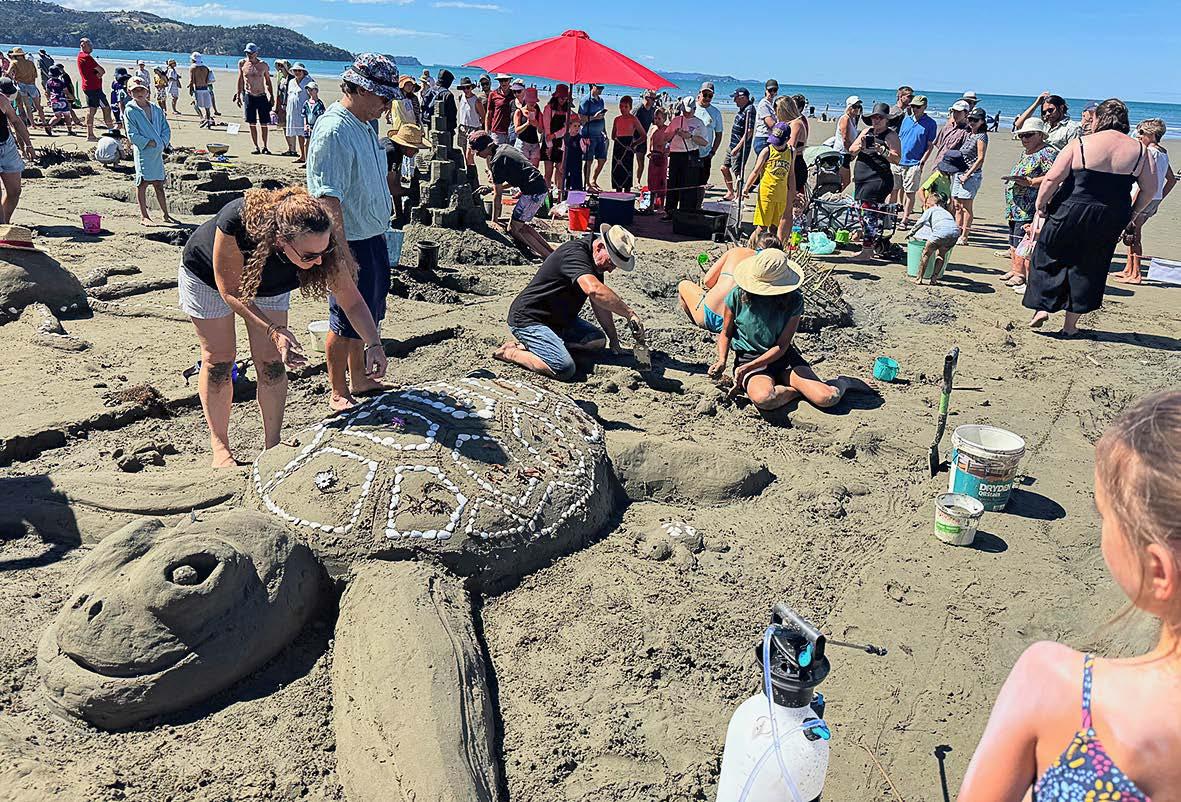










After Stillwater resident Lisa Thwaite watched her friend and neighbour’s home burn to the ground last December, she knew something had to change.
The suburb is reliant on tank water, while emergency services face a 20-minute journey down the only access route, a narrow winding road undergoing extensive roadworks. Thwaite admits that the December blaze, which saw 15 trucks, tankers and support vehicles in attendance, left her shaken.
“It happened so fast, and we are so vulnerable here because we are on tank supplies, so our water access is limited. Concerned about the growing fire risk, she organised a meeting to bring together the community and fire services to discuss what measures they could take for better fire preparedness. According to the NZ Firefighting Code of Practice, in areas without a reticulated water supply there should be 45,000 litres of water available with 90m of homes dwellings. Stillwater, home to about 934 people and 324 dwellings, falls far short of that requirement.
I’ve walked up there and found lots of fire pits. All it takes is a spark for the whole lot to go up.
“There is no way we have that amount of water in Stillwater, especially in the current dry conditions,” Thwaite says. Another threat facing the community emerged at the meeting; a large, unmanaged block of wilding pines on private land at the south east side of the suburb.
Lisa says a firebreak once existed, but it has long since become overgrown.
Despite their efforts, residents have been unable to contact the landowner, and Thwaite says the community is growing increasingly worried.
‘It’s tinder dry and much as we try to stop it, kids go up there to ride motorbikes and muck about. I’ve walked up



21 Florence Ave, Ōrewa, 0931 | ph 09 427 8188

Hibiscusmatters

General manager: Jannette Thompson gm@localmatters.co.nz
Editorial:
Adrienne Kohler ph 022 019 6569 hibiscusnews@localmatters.co.nz
Graphic design: Lorry McCarthy hibiscus@localmatters.co.nz
Advertising: Leigh Cameron ph 022 096 8517 sales@localmatters.co.nz
Online:
Courtney Gerrand ph 022 544 0249 online@localmatters.co.nz
Accounts:
Angela Thomas ph 09 425 9068 admin@localmatters.co.nz
Next issue: March 24, 2025
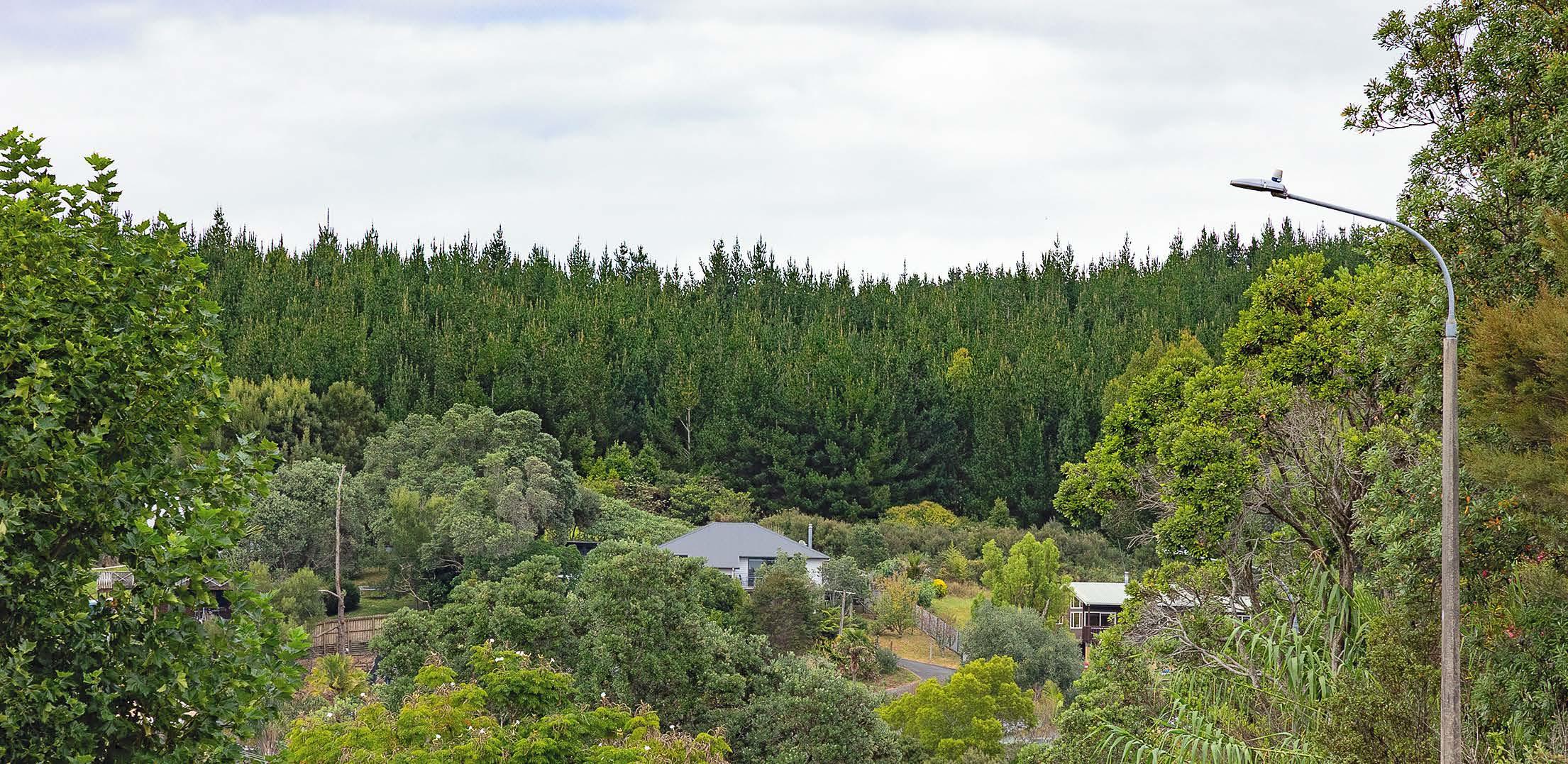
there and found lots of fire pits. All it takes is a spark for the whole lot to go up. The fire service advised us the fire break needs to be at least twice the height of the trees – well some of them are at least 20 metres high now!”
Despite the challenges, Thwaite says she was inspired by the support from the Stillwater community.
“We had a great turnout and it’s about mitigating our risk as much as possible. The fire service gave us insights and although there is a lot of work to be done, and people to talk to, it is a step forward to get together and make a plan.”



Already Auckland councillors John Watson and Wayne Walker, who attended the meeting, have responded by raising the issue with Auckland Council, especially assistance with clearing the fire break and better water provision.
“Given the concerns expressed it’s important authorities come up with some responses that simultaneously alleviate the risk of fire starting as well as increasing the potential access to water supply in the area in the event of one actually breaking out,” Cr Watson says. “There’s a strong community spirit in Stillwater and it was clear from the meeting there’s a good core of people willing to get involved and work together to improve the situation.”





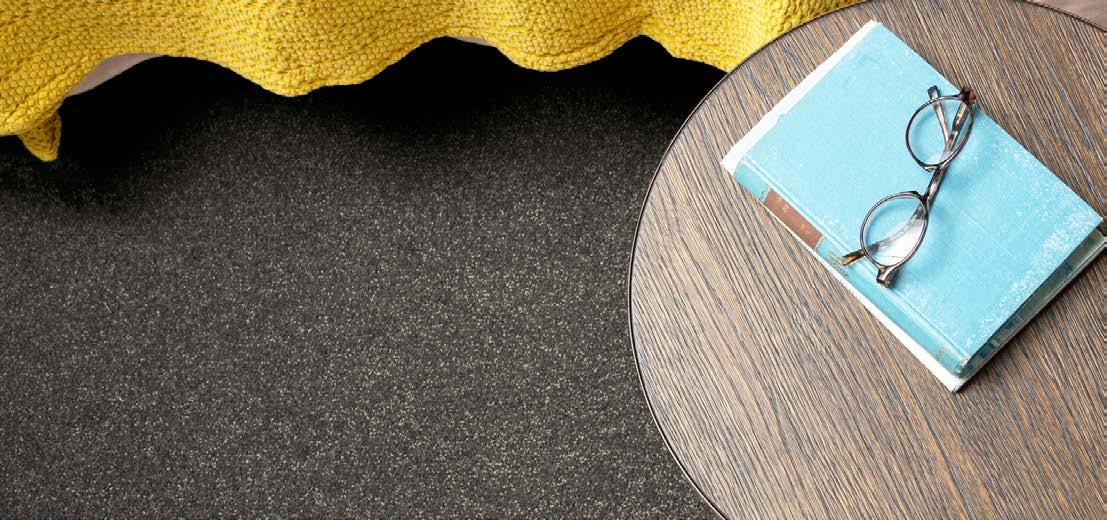

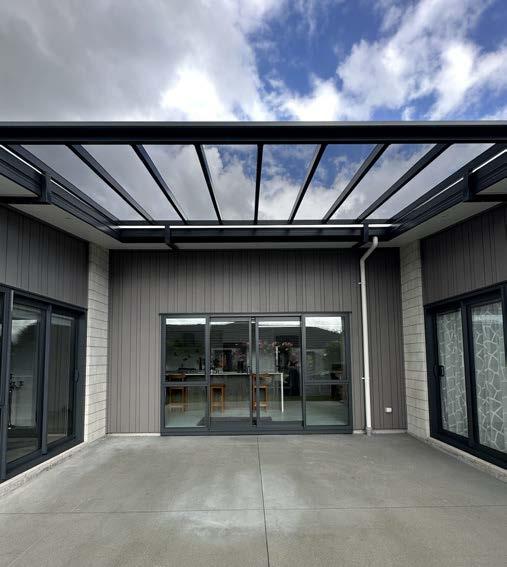
Consultation has opened for Auckland Council’s Annual Plan 2025/2026.
The annual plan, which takes effect from July 1, 2025, outlines the council’s spending priorities and how they will be funded in the next financial year. Consultation is open until March 28, 11.59pm.
Proposed rates increases
The council proposes an overall rates increase of 5.8 per cent for the average-value residential property in 2025/2026, which equates to approximately $223 per year or $4.29 per week. The increase includes:
• A 3.3 per cent rise in the targeted rate for waste collection.
• An average general rates increase of 6.4 per cent for existing ratepayers.
• An average 3.5 per cent increase in the Natural Environment Targeted Rate and Climate Action Transport Targeted Rate.
• An average increase of $2.12 per week for the Water Quality Targeted Rate.
For business properties, the council aims to maintain the 31 per cent share of general rates paid by businesses, resulting in an expected increase of 6.8 per cent. This equates to around $27.08 per week or $1,408.17 per year for the average-value business property.
Property revaluations underway
Auckland Council is currently conducting its three-yearly property revaluations, which will impact rates in the 2025/2026 financial year. The updated valuations will determine how much individual ratepayers will contribute. However, the exact impact on rates will not be known until the new valuations are released later this year.

In 2025/2026, the Hibiscus and Bays Local Board is set to receive $17.2 million in capital spending to renew and develop assets, alongside $28.6 million in operating funds to maintain and operate these assets. Additional funding of $1.3 million in operating expenditure and $800,000 in capital costs is included under the council’s ‘fairer funding for local boards’ model, but some of this may be needed to cover increased service costs.
Key initiatives in the area include:
• Supporting youth networks to give young people a voice in local decision-making.
• Restoring waterways and uncovering buried streams to protect natural resources.
• Enhancing parks, reserves, and sports fields for all residents.

• Strengthening local business associations to support economic development.
• Investing in climate change resilience through initiatives like the Urban Ngahere (Forest) Strategy.
• Contributing funding towards a vision and future plan for North Harbour Stadium and Domain Precinct.

A key proposal in the plan is the introduction of a ‘bed night’ visitor levy, aimed at funding major events and promoting Auckland as a visitor destination. If approved, visitors staying in short-term accommodation such as hotels and bed and breakfasts would pay an additional charge of 2.5 to 3 per cent per night. The levy could generate approximately $27 million annually, but its implementation depends on central government legislation, which has yet to be approved.
Funding major events
The council’s Long-term Plan (LTP) 2024-2034 committed to continuing support for cultural festivals, but an additional $7 million is needed in 2025/2026 to fund major events such as the Auckland Marathon, Auckland Writers Festival, and ASB Classic.




Residents are invited to a drop-in session at Whangaparāoa Library to discuss the proposed annual plan with the Hibiscus and Bays Local Board team. The session will be held on Friday, March 14, from 10.30am to 12pm at Whangaparāoa Library, 9 Main Street, Whangaparāoa. For more information or to read the Annual Plan 2025/2026 consultation document, visit: akhaveyoursay.aucklandcouncil.govt. nz/annual-plan-2025-2026/plans-your-local-boardarea/hibiscus-bays
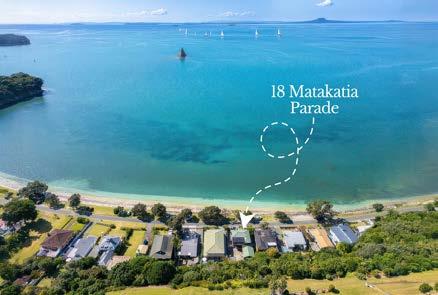






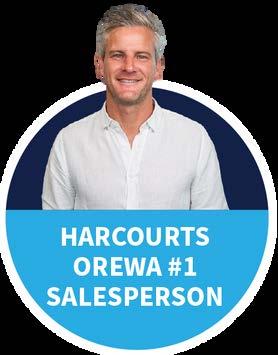




Hibiscus Matters editor Adrienne Kohler reflects on the five year anniversary of Covid-19.
A photo came up in my memories the other day that I call “The day I got Covid.” It was taken on February 6, 2020, when I was living in Los Angeles and working for Canon USA.
Some of my colleagues had just returned from the Sundance Film Festival. A couple of days later, they were all sick. A few days after that, so was I.
Later, it turned out Sundance 2020 was one of the first superspreader events of the Covid-19 pandemic.
By February 28, the first case appeared in New Zealand, and on March 11, the World Health Organisation declared a global pandemic.
Looking back, the memories come in quick succession: the day supermarket shelves at Whole Foods were stripped, the day the pandemic was declared, the mandatory lockdown in LA, returning to New Zealand through an eerily empty Los Angeles airport, entering quarantine, the joy of leaving quarantine, and then, three weeks later, back into lockdown in Auckland.
Now, suddenly, it’s 2025. For many of us, time between 2019 and 2025 seems to have moved in fits and starts, but there is no doubt the pandemic has had a significant effect on our lives.
According to Statistics New Zealand, some sectors still haven’t recovered to pre-Covid levels. For example, overseas visitor arrivals in November 2024 were 86 percent of those recorded in November 2019.
Hellen Wilkins, Business Manager
of Destination Ōrewa Beach, has closely monitored these changes as the organization has maintained statistical data on the area’s performance for years, including throughout the pandemic.
“One of the most significant factors affecting businesses across all sectors has been the reduction in discretionary spending, largely driven by rising mortgage rates, an issue felt nationwide,” she says. “Beyond this, the most persistent challenges for the retail
A positive shift has been the way businesses have adapted and diversified their models in response to Covidrelated challenges
and hospitality industries in the post-Covid landscape have been ongoing product cost increases and widespread staff shortages.
Additionally, our experience in organising events has highlighted the exponential rise in service and infrastructure costs, a concern impacting businesses across the board.”
For destination towns like Ōrewa, the financial impact of losing national and international tourists was substantial. However, Wilkins says there are signs of recovery.
“We are now seeing a strong resurgence, with tourist buses returning to Ōrewa multiple times a week, which is an encouraging sign for the local economy,” she says.

particularly positive shift has been the way businesses have adapted and diversified their models in response to Covid-related challenges. Many have embraced digital transformation, with a significant increase in online shopping options. Restaurants that previously operated solely as dine-in establishments now offer takeaway and delivery services. Businesses have also adjusted staffing strategies to align with peak foot traffic, refined product offerings to meet changing consumer spending habits (for example, supermarkets increasing home-brand options over boutique brands), and continue to navigate ongoing supply chain disruptions.
For many, the pandemic also changed the way we work. Dr Nicola Green, a senior lecturer in health and work at Massey University, says one of the most direct impacts was the shift to remote work.
“People had to work from home and then realised its benefits, while organisations also saw that it could help manage disruptions,” she says. “Organisations learned that working from home was good for business continuity, as well as employee retention and recruitment.”
She says the recent push for a return to the office often comes down to management style. Many organisations have now adopted a hybrid model, blending office


offers the best balance.
“But 100 per cent remote work has its downsides, as there is no separation between work and home, leading to burnout.”
The recently released Royal Commission of Inquiry into Covid-19 Lessons Learned highlighted that even people who were doing well before the pandemic found themselves struggling financially, emotionally, and socially.
“Some were more susceptible to loneliness and isolation; others suddenly had to get by with less income, while for some, their previously manageable living arrangements became unsafe.”
The report also noted that the pandemic exacerbated existing social challenges, including unaffordable housing, high rates of mental ill health, long-standing inequities for Māori and other groups, and persistent economic disadvantage.
While the report’s recommendations focus on preparing for future pandemics, the social and economic impact of Covid-19 is still being felt across New Zealand. A number of studies conducted shortly after the pandemic found that it accelerated structural changes in the workforce, education, and mental health services, some of which will have long-term consequences. Five years on, while recovery is underway, the legacy of Covid-19 continues to shape

A community youth aid programme launched in Ōrewa is inspiring Hibiscus Coast youth to find positive new paths and build self-confidence and is showing early success towards improving student engagement and community connection. The initiative, known as the Mana Up Programme, was launched collaboratively by Hibiscus Youth Hub, Whangaparāoa College, Ōrewa College, and NZ Police. Recognising that youth often struggle when feeling disconnected or excluded from society, the programme focuses on inclusion, self-esteem, and fostering a sense of belonging among students.
Rodney District Police Youth Aid Sargeant
Jon Williams, who leads the programme, highlights its positive impact, “We’ve seen these young people grow in confidence and start to see themselves differently. They’re discovering they have real strengths and potential to succeed.”
Williams, who successfully led similar programmes in Warkworth, leading to greatly reduced youth crime rates, now heads a dedicated team of eight Youth Aid officers supporting students across Rodney District and the Hibiscus Coast. Mana Up works with two groups of 30 students from Ōrewa and Whangaparāoa Colleges several times a week through a gym-based mentoring programme incorporating fitness training and team-building activities. Ōrewa College Principal, Wiri Warriner, says the students, from Year 7 to Year 9, are fully embracing the programme.
“It’s been great to watch how positively students have engaged, and the impact it is having on our rangatahi. Not only has it contributed to a noticeable improvement in their overall wellbeing, but we’ve also seen a boost in both attendance and their approach towards school. The initiative has truly embodied the spirit of “win the morning, win the day,” encouraging students to approach each day with focus and optimism. We’re excited to continue seeing these positive outcomes unfold”.
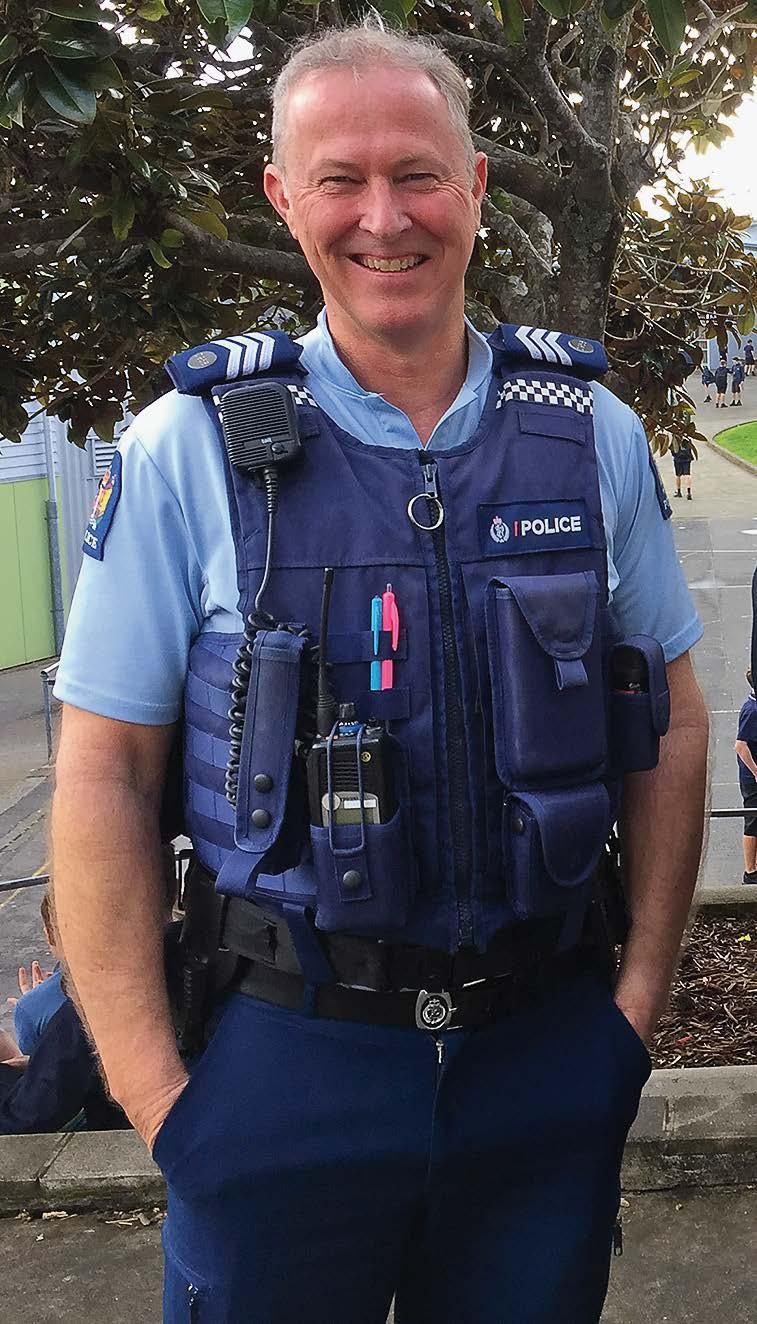
and support their personal growth. By integrating this programme within our schools from Year 7 onwards, we have been able to create opportunities for students to thrive, helping them navigate the challenges of adolescence while remaining engaged in their learning and the wider community. We’ve seen first-hand the benefits of this approach, with strengthened relationships between students, whānau, and local police, as well as a noticeable decrease in youthrelated incidents. The success of the Hibiscus Hub is a testament to what can be achieved when schools and community organisations work together to empower young people.”
The programme also extends mentorship to youth who have disengaged from formal education, providing supportive relationships and practical skills to reengage them positively with society.





Principal of Whangaparāoa College, Steve McCracken, highlights the programme’s success in keeping students engaged in school and connected to positive, prosocial activities.
“This initiative has provided students with uplifting, mana-enhancing experiences that build confidence, strengthen wellbeing,
Already, the community is witnessing tangible results as youth-related incidents around previously challenging spots like the Hibiscus Coast Bus Station have noticeably declined.
“We know that when young people feel included and supported, they naturally move towards positive choices,” Williams says. “Mana Up is all about unlocking potential, giving them opportunities to see themselves differently, and letting them know their community believes in them.”





Contributions are welcome (preferably under 250 words). Please email hibiscusnews@ localmatters.co.nz Note: We reserve the right to reject, edit and abridge as necessary. We do not publish abusive or unsigned letters.
John Kirkham’s letter of February 24 presents a dire view of infrastructure provision on the Hibiscus Coast. Amongst other things he refers to “…our water from the Waitakeres supplied via an aged, leaky piped system. Our overloaded sewage that is pumped down to Albany.” These statements are simply incorrect – there is no connection between us and Albany, and Watercare has invested literally hundreds of millions of dollars in water and wastewater projects on the Hibiscus Coast in recent years. The new booster pump station on East Coast Road (opened in 2023) can pump an extra 17 million litres of water to Hibiscus Coast, increasing the amount of water pumped into the region from 17 to 34 million litres daily. Watercare also plans to invest approximately $500 million in wastewater infrastructure in coming years, including a major upgrade to the Army Bay Wastewater Treatment Plant. Mr Kirkham then calls Penlink a billion dollar ‘white elephant’. While it might well end up costing that amount, if not more, it is a project that will also improve resilience and travelling times from Whangaparāoa Peninsula as well as significantly reducing congestion on the Hibiscus Highway and Silverdale interchange for the rest of the HBC (one of the main drivers for the project). When finished, Penlink will complement the relatively new HBC Station, which has the second largest Park and Ride in NZ, an upgraded bus network that feeds into the region’s most successful public transport corridor on the Northern Busway and, hopefully, a rejuvenated ferry service at Gulf Harbour. Coasters had to advocate hard for Penlink over many decades and I doubt whether most will share this dismissive view.
Concerns over the scale and speed of development on Whangaparāoa are, however, legitimate and date back to the 1980s. In recent times that development has been exacerbated by fast-track legislation and planning impositions
imposed by successive governments not council (which is admittedly permissive enough). Cr Wayne Walker and I share these concerns and have a long track record of protecting the public interest – as we did at the Hammerhead when a previous council tried to sell the prime waterfront land to a developer to build more than 300 four-storeyed apartments, and we are currently working with active members of the community to protect the open space zoning on Gulf Harbour Golf Course, support for which we remain most appreciative.
John Watson (Albany Ward councillor)
I cannot let John Kirkham’s letter go unanswered, although I am not aware of his concerns over John and Wayne as they are not specifically identified.
Several years ago, Ōrewa was threatened with multiple high-rise apartment blocks along the western side of the Hibiscus Coast Highway. They would have blighted the town and given rise to the effects experienced from the Nautilus, viz. long shadows and adverse wind conditions, associated with tall buildings, which blight the area particularly in the winter months. For a number of years, the Ōrewa Ratepayers and Residents Association (ORRA), fought Rodney District Council and certain developers to prevent this happening. The fight ended with a win in the Environment Court, with the help of a large donation from a local resident. The plans were thrown out and Ōrewa remains what we see today.
John and Wayne were extremely encouraging and, indeed, most helpful in our fight and deserve thanks from the Ōrewa community.
Ron Cooper, Ōrewa
Congratulations to Hibiscus Matters book giveaway winners: Finding Her Stride – Amanda Godderidge, Manly, Whangaparāoa, and Rising Sun Falling Rain – Sheryl Edwards, Ōrewa.

The Rodders Beach Festival team were thrilled to announce on Facebook that they had raised $83,000 for Westpac Rescue – Auckland!
“A massive thank you to our incredible sponsors, our generous auction item donors, and everyone who made this possible,” the post said. “We are forever grateful to each of you for helping us promote the love of hot rodding while making this festival one to remember!
A huge shoutout to all the amazing hot rod
Our hearts go out to Ōrewa visitor Andrew Laing who fell victim to a water pipe that has been slashing unwary motorists’ tyres outside the WINZ office on Florence Avenue.
It has been reported to Auckland Council but we can understand his ire at having to get a tyre replaced. Hopefully, the council repair it soon but a quick check by the Hibiscus Matters confirmed it is still there, so be careful when parking.
entrants for bringing your dream machines to life and putting on a spectacular display. Your support and participation were key in making this weekend unforgettable. We hope you enjoyed every moment.
To the public who cruised with us, made donations, and joined in the fun – Thank you, your energy and enthusiasm made this event an extraordinary success. We can’t wait to present our giant $83,000 cheque to the true heroes, the magnificent “angels in the sky,” who save lives every day!”

Construction has resumed on Ōrewa seawall on the section between Kohu Street and Kinloch Reserve. Auckland Council says this should be completed over the coming months with the construction of a pedestrian ramp and stairs. The car park in Kinloch Reserve is expected to remain open during construction, although the council says it may close at times to allow for installation of services. Pedestrian access will continue from Kohu St and Kinloch Reserve. The council ask the public to stay outside fenced areas and away from machinery and vehicles moving along the beach for their safety. Watercare will also be replacing a watermain damaged by Cyclone Gabrielle that runs along the foreshore reserve, and will notify residents of this ahead of time.



Alexis Poppelbaum, Hibiscus & Bays Local Board chair alexis.poppelbaum@aucklandcouncil.govt.nz
Since the supercity was formed, funding imbalances have existed across the 21 local boards in Auckland. The Governing Body has sought to address this by approving a ‘fairer funding’ approach for local boards. The purpose of this is to better enable us to respond to the needs of our communities. Historically, funding differed between local boards because it was allocated based on the assets and services provided by the legacy councils before they merged into the supercity. Local boards with more assets were considered over-funded compared to others with fewer assets who received lower funding. The new ‘fairer funding’ approach allocates funding to local boards based on an ‘equitable funding level’. This is calculated according to each local board’s population (80%), levels of deprivation (15%), and land area (5%). For the Hibiscus and Bays Local Board this results in an additional $1.3 million to our operating expenditure in 2025/2026, a welcome addition so we can adequately service our vastly growing area.
All is not as it seems though. It was indicated late last year that there would be some unavoidable cost pressures on our existing assets and services that would need to be accommodated from this increase. The cost pressures are largely unexpected due to contractual/inflationary costs being greater than prior assumptions. It is looking worse than anticipated. The challenge is that local boards have
very little control over local facility assets and services, and few strings to pull with ease to bring costs down or to increase revenue. Some of these local facility cost pressures are the result of governing body decisions. How local boards can address this issue will be the challenge, and advice from council staff and the Governing Body is needed now.
Funding differed between local boards because it was allocated based on the assets and services provided by the legacy councils before the supercity merge
Auckland Council’s Annual Plan 2025/2026 is out now for consultation. This includes the key projects and activities the local board proposes to prioritise next financial year. Please let us know your thoughts by March 28. Getting your feedback on what we prioritise our funding on is important – in light of both our additional ‘fairer funding’ and the cost pressures we’re facing.
You can find everything you need to know about the plan and give feedback at akhaveyoursay.nz/ourplan
Hibiscus and Bays Local Board Annual Plan drop-in sessions: Whangaparāoa Library, Friday, March 14, 10.30am-12pm.
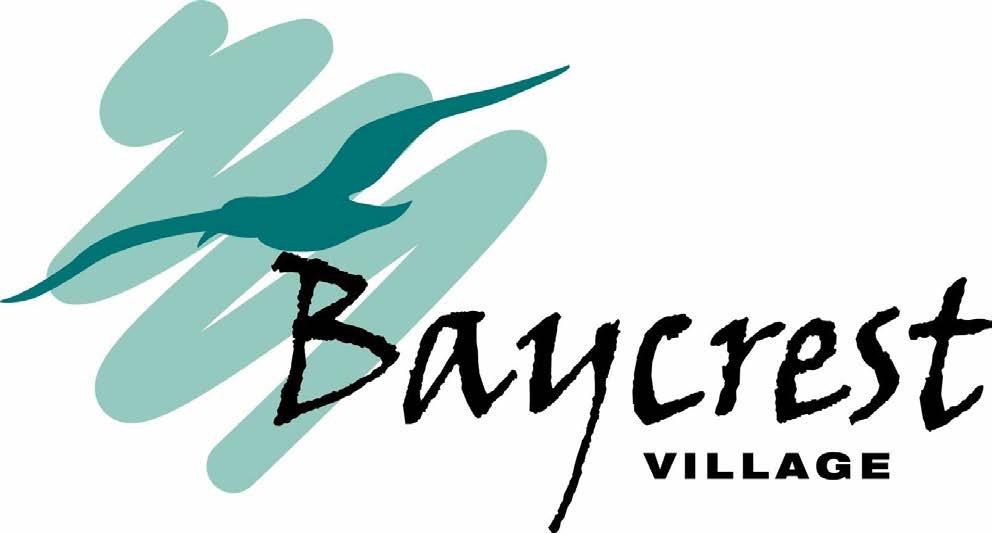




•



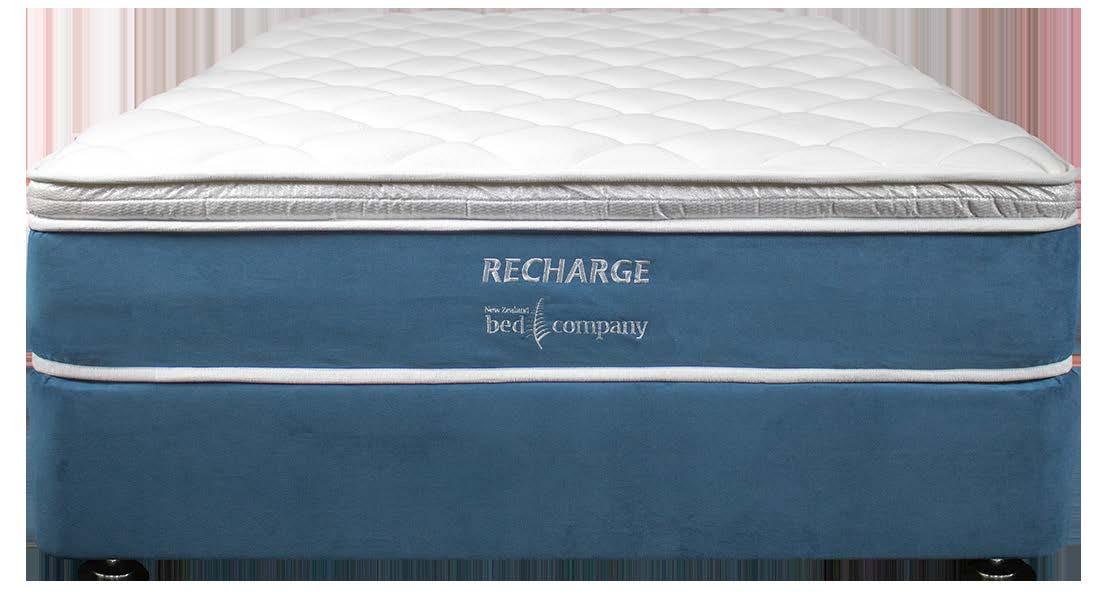




Facebook community groups are helpful platforms for connecting with locals, sharing recommendations, and supporting small businesses.
However, they have also become hunting grounds for scammers employing various tactics to deceive unsuspecting members. One such prevalent scheme is the “car detailing scam,” which has been reported in many countries, including New Zealand.
Scammers pose as owners of small car detailing businesses, posting enticing offers in community groups, often with a hard luck story of falling on tough times. These posts often feature before-and-after photos of detailed vehicles and promise special discounts or no upfront payments. The aim is to lure members into direct messaging them. Once contact is established, the scammer’s tone changes, and they may request “refundable deposits” or personal information under the guise of securing a booking. In reality, these deposits are never returned, and the promised service is never rendered.
Youtubers who have investigated the scam have traced it back to call centres in Pakistan who create fake Facebook identities and messages to lure customers into engaging with them. Often the socalled technicians never arrive, or if they do it’s a random person engaged to do the clean but at nowhere near the required level for the prices charged. To protect yourself from such scams, it’s essential to be vigilant and recognise warning signs:
Unsolicited offers: Be cautious of unsolicited messages or posts offering services at unusually low prices. If it seems too good to be true, it probably is. Lack of detailed information: Legitimate

businesses typically provide comprehensive information about their services, including contact details, physical addresses, and customer reviews. Scammers often lack this transparency.
Pressure tactics: Scammers may pressure you to act quickly, claiming limited-time offers or urgent availability. Take your time to research and verify the legitimacy of the service.
Requests for upfront payments: Be wary of businesses requesting deposits or full payments before providing any service, especially if they insist on unconventional payment methods. Netsafe, New Zealand’s online safety organisation, offers advice on recognising and avoiding scams:
Verify business pages: Check the business pages have detailed profiles and active selling histories. Check customer reviews for any negative feedback or red flags. Even then, many pages seem legitimate so check how long they have been active for and if the review profiles are legitimate.
Scrutinise seller profiles: When interacting with a seller, examine their activity history. Conduct an online search of their name to see if it appears in reports of scams.
How to Protect Yourself
Use secure payment methods: Avoid making payments through unconventional methods. Opt for secure and traceable payment options or only once you are fully satisfied the service or product has been delivered.
Report suspicious activity: If you encounter a suspected scam, report it to the Facebook group administrators and to Netsafe. Reporting helps protect others in the community from falling victim.
Educate yourself: Stay informed about common scam tactics. Netsafe provides resources to help individuals recognise and avoid scams.










Tin

and
We specialise in: Nationwide service
Demolition of all sizes • Asbestos removal and control • Barge salvage • Factory clear-out
• Machines of all sizes dismantled and removed
• Scrap removal • Farm yard clearance
William and his team provide a timely and reliable service with communication and safety being at forefront.

Tin Men is committed to local communities. The company is committed to assured health and safety current practices for every employee, customer, visitor or neighbour.
The company continues to invest heavily in effective safety management systems with dedicated and committed staff whose roles are to ensure safe work practices.
We proactively mitigate the inherent risks and have the strongest safety and environmental practices in the metal recycling industry in New Zealand.

Michael Goudie michael@teandem.co.nz
Recently, I had the privilege of returning to my old stomping ground, Ōrewa College, to speak to a group of students celebrating excellence in last year’s NCEA results. As I looked out at this group of high schoolers on the verge of entering the real world, I couldn’t help but reflect on what I wish I had known at their age.
At 17, it can feel like your choices now will define your entire career. The truth? They won’t. You will pivot. You will change. You will take opportunities that weren’t even on your radar. And in many cases, that’s exactly how success happens.
Over the past 20 years, my own career has taken many turns. I started out working hands-on jobs – cleaning cars, working at McDonald’s, and scooping ice cream –before moving into property management. Then, I ran for local government and became an elected councillor, making decisions that shaped the community.
From there, I found myself in media, hosting a radio show, which led me into the world of communications and stakeholder engagement. I worked on major international events, helping to deliver the America’s Cup and coordinating with world leaders for APEC. Then, I stepped away from government and event management to enter the construction and business sector, working at GJ Gardner Homes before ultimately leaping into starting my own business. And now? At 39, I’m on the verge of doing it all again – starting over once more.
This isn’t unusual – it’s becoming the new normal. The younger generation today won’t just have one career. They’ll have many. They’ll create their own industries, build businesses in ways that haven’t been done before, and work in jobs that don’t even exist yet. The key is to stay adaptable.
During my talk, I played a rally crash video from a few years ago – a big crash I was involved in that flipped everything upside down in an instant. Rallying is all about precision, teamwork, and planning. But no matter how well you prepare, things can change in an instant. That’s true in business, too.
So, for those about to take their next steps, here’s what I wish someone had told me at 17: Don’t overthink things. Most people are too busy worrying about themselves to be judging you.
Say ‘yes’ to opportunities – early on, explore the yes’s, and max out your bandwidth. The world is shifting fast. You will be the one shaping the next wave of business and technology.
Keep moving forward. You don’t need the perfect plan – you need to start. At the end of the day, character, resilience, and adaptability are what count.
A massive thanks to Wiri Warriner and Ōrewa College for having me – it’s always a privilege to share insights with the next generation of business leaders, innovators, and entrepreneurs.

A dormant piece of Waiwera might soon see new life, with the former campground now on the market.
The site has been lying vacant since 2018 (Hibiscus Matters Aug 18, 2023) along with the rest of the former Waiwera Thermal Resort, which in its heyday in the early 2000s brought in a peak of 325,000 visitors per year to the small seaside village.
Urban Partners, owners of the derelict Waiwera Spa Resort, are selling the property, while Colliers New Zealand is marketing the 1.78 hectare site, which is being sold by expressions of interest closing on March 20.
The campground was once a popular spot for holidaymakers, taking advantage of the nearby Waiwera hot pools and beach, alongside the now-demolished Waiwera Thermal Resort, which closed in 2018 following financial troubles under Russian businessman Mikhail Khimich.
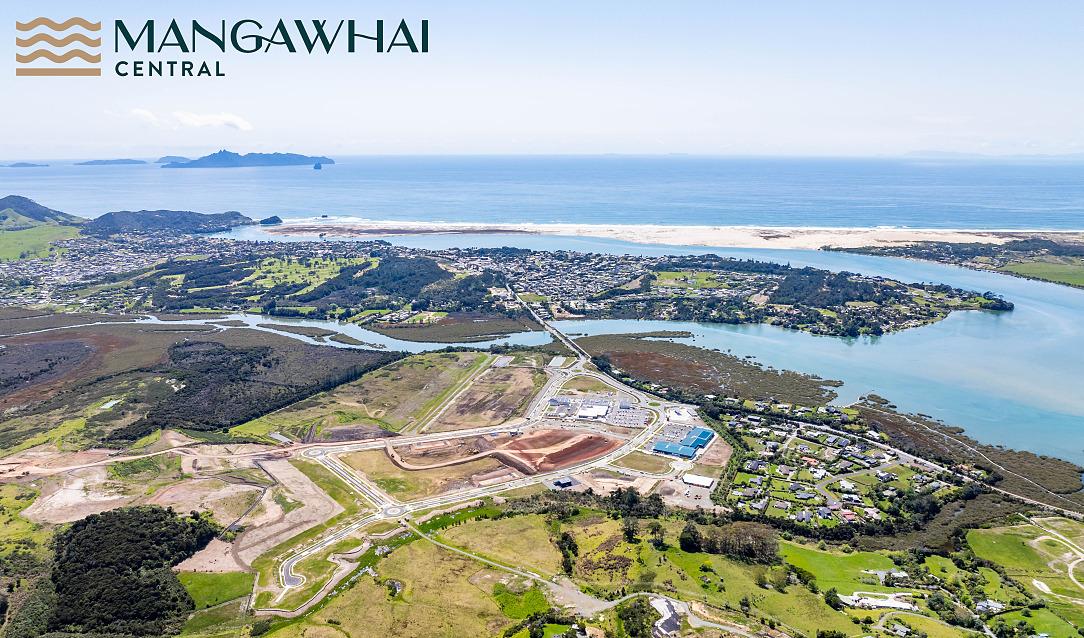
The resort was finally torn down in 2023 after unsuccessful attempts to restore or
redevelop it.
However, local residents might be forgiven for remaining skeptical, with one longtime resident, who asked not to be named, saying it’s just the latest chapter in a long running saga.
“Waiwera is a lovely, quiet seaside town now and although we would welcome some development, we don’t have a lot of control or say, so it’s a wait and see situation,” the resident says.
Moreover, any future use of the campground land will likely require careful planning and consideration of climate resilience as according to the latest Auckland Council flood hazard maps, the front section of the land lies in a flood plain and coastal inundation zone.
The site, however, according to Colliers, does have resource consents for an existing agreement with Watercare for wastewater connections and potential for recommissioning a geothermal bore.


Secure your dream section in the first stage of this master-planned residential and lifestyle community in Mangawhai Central. Interest is high in the remaining lots in Stage 1D with prices starting from an affordable $399,000. Section sizes range from 512sqm and 3,142sqm (more or less) and include wastewater, power and fibre connections with parks, walkways, cycleways, and a pontoon on the estuary planned for the future. Titles are expected to be issued soon. All lot owners will enjoy a flat short walk to shops and amenities, with sensible design guidelines to protect your investment. Perfectly positioned between Mangawhai Village, Mangawhai Heads shops and surf beach with Te Arai Links and Tara Iti golf courses nearby. Book an appointment today for the lifestyle you deserve. Amanda Bond 022
Secure your dream section in the first stage of this master-planned residential and lifestyle community in Mangawhai Central. Interest is high in the remaining lots in Stage 1D with prices starting from an affordable $370,000 and section sizes ranging from 512sqm to 3,142sqm (more or less). With new roads and footpaths, tree-lined avenues, and services already in place, be quick to take advantage of these early bird prices with titles due out soon. All lot owners will enjoy a flat short walk to shops and amenities, with sensible design guidelines to protect your investment. Book an appointment today for the lifestyle you deserve. bayleys.co.nz/1153903


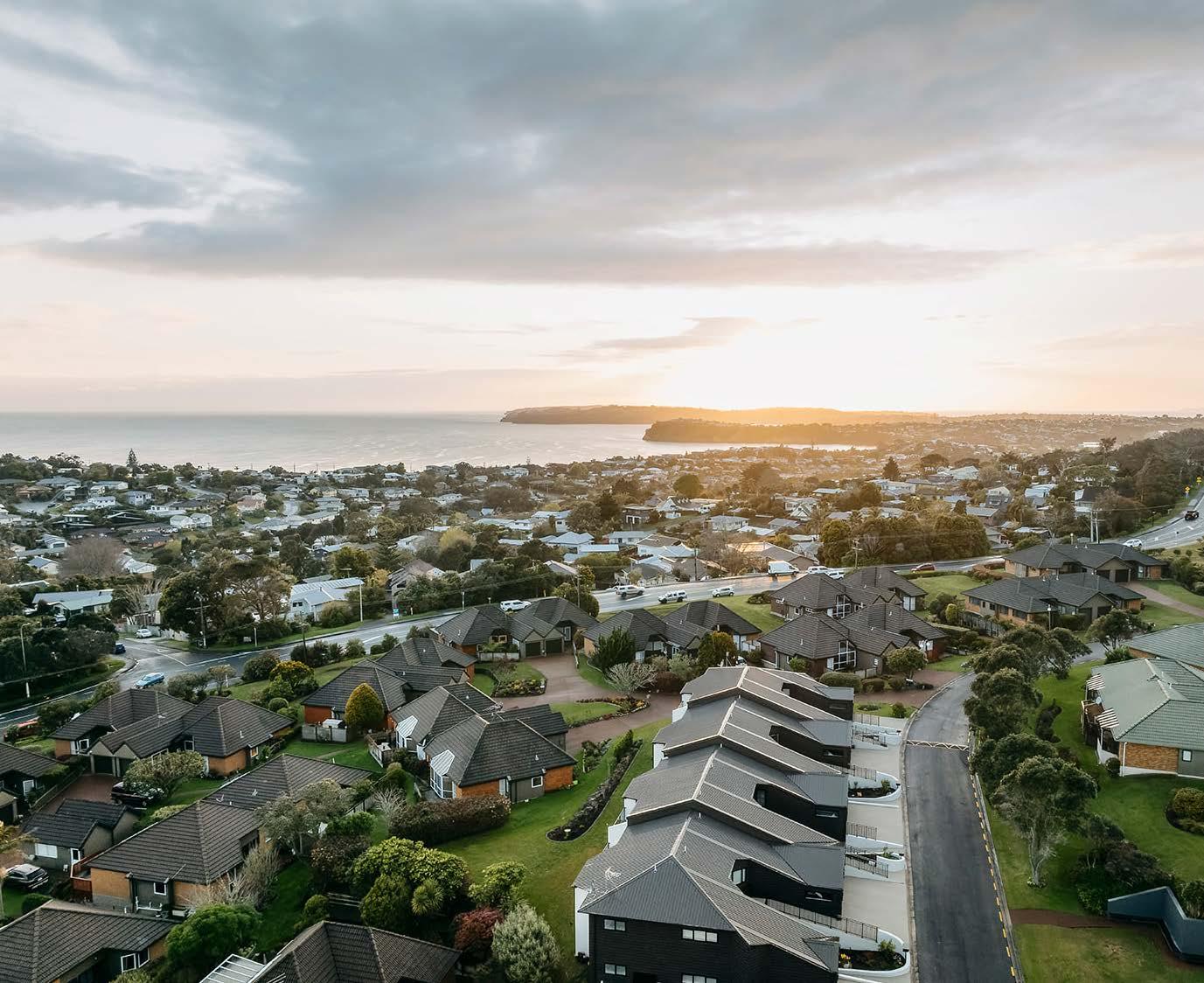

Come and explore our
Friday 21 & Saturday 22 March, 10am – 2pm Arvida Peninsula Club, 441 Whangaparāoa Road, Stanmore Bay
Open the doors of Arvida Peninsula Club to discover your perfect home amidst the ocean breeze. Enjoy independence with ease in a well-established retirement community, flourishing with freedom and fun. Close to beautiful beaches and shopping centres.
We’ve got a selection of villas and apartments waiting for you to view. These openings are a rare find, so don’t miss your chance to secure your spot.
Call Cassandra on 021 371 826 or find out more at arvida.co.nz An Arvida Living Well Community
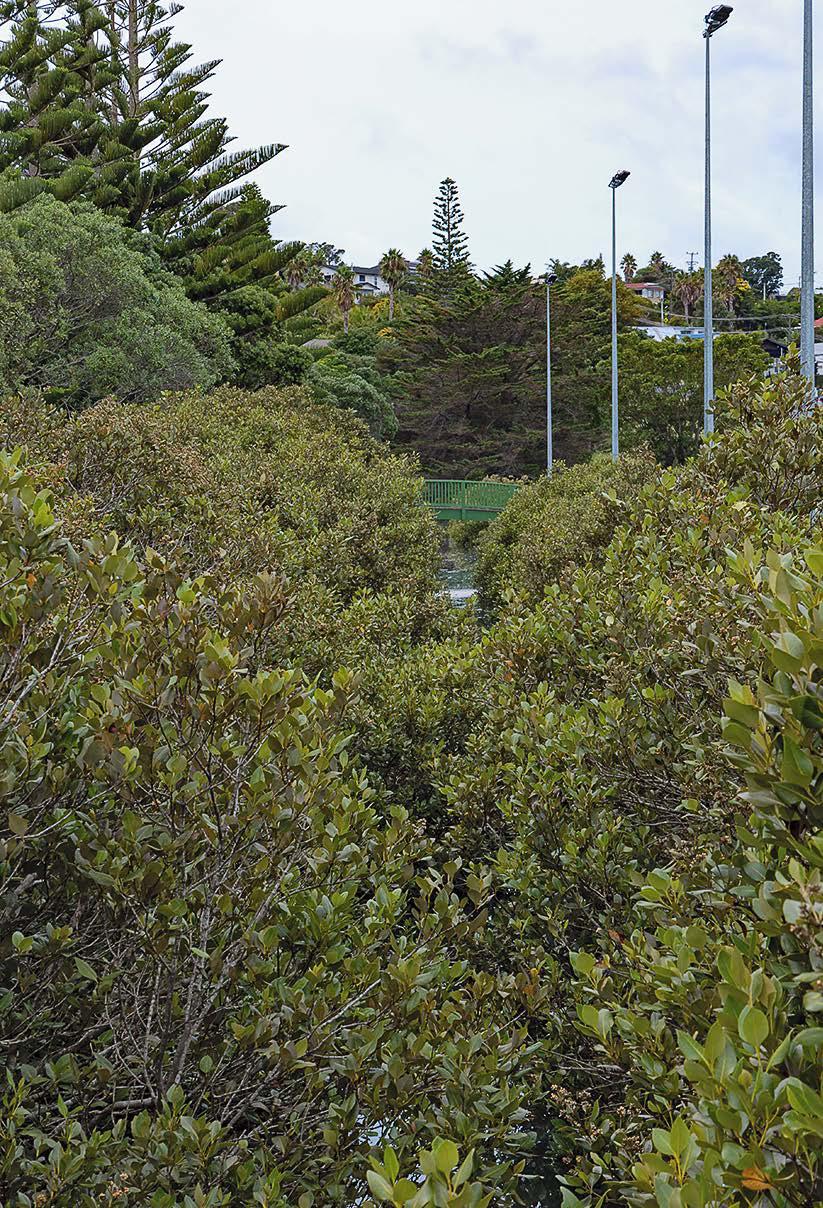
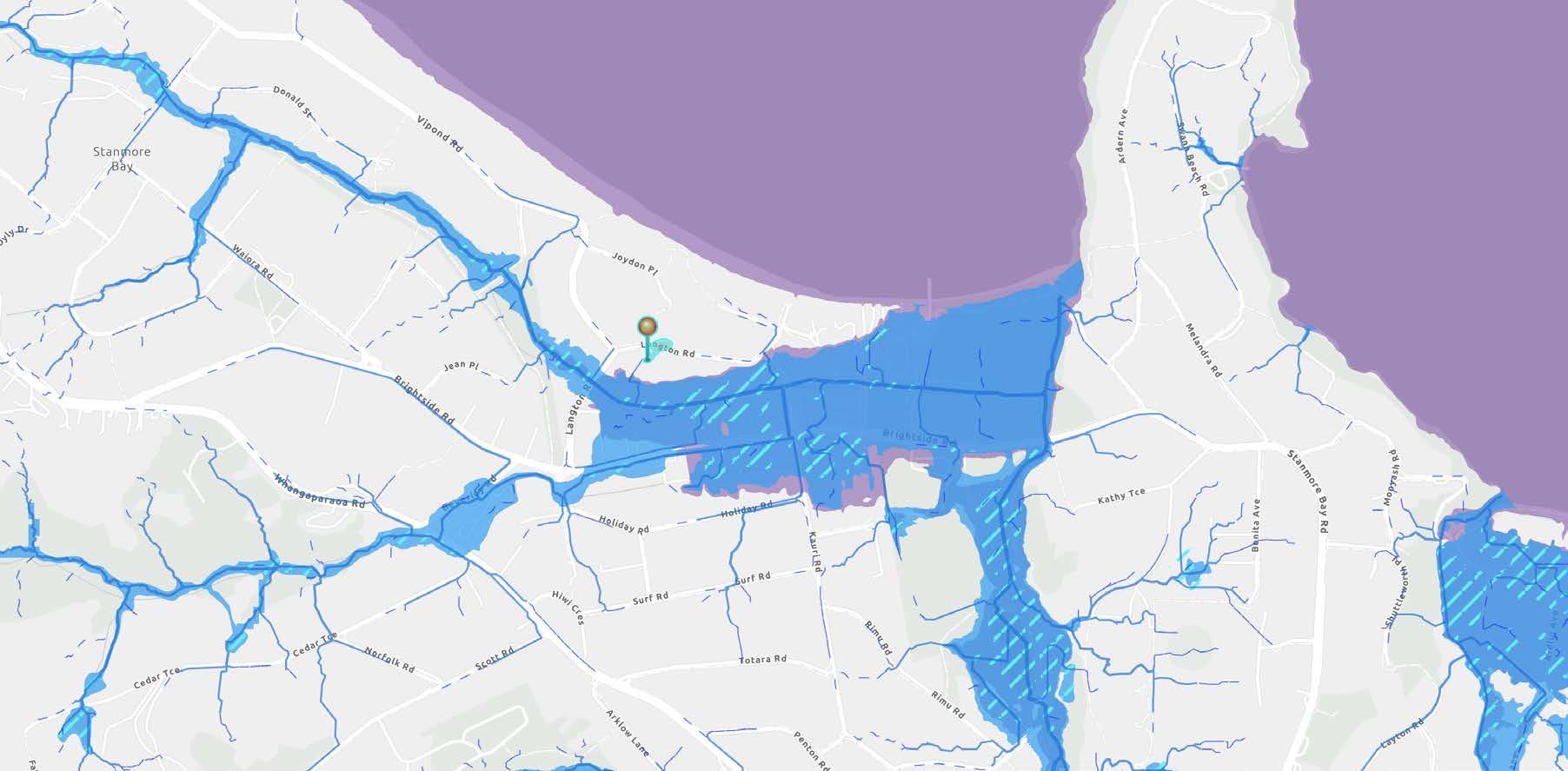
Stanmore Bay resident Alethea Courtnay believes Auckland Council should do more to care for overgrown streams, especially when they run through multiple properties, after repeated flooding at her home.
Courtnay’s house was severely affected by flooding during both the Anniversary Weekend and Cyclone Gabrielle storms, as water from the stream running through her property overflowed. She says the council’s lack of action in maintaining the stream has left her exhausted and frustrated.
“The mangroves downstream need to be removed,” she says. “I couldn’t believe my eyes when I went to look, you can only see the trees, you can hardly see the water.”
Courtnay has raised ongoing concerns with the council over the years about managing the stream, which lies in a gully that runs parallel to Langton and Brightside roads, passes through multiple private properties, and continues downstream through
council-owned Stanmore Bay Park into the bay. Mangrove growth in the lower tidal section on council land significantly restricts water flow, increasing flood risk, she says, while other properties are heavily overgrown.
She argues that the council needs to assist private owners by actively maintaining streams, particularly when they cross multiple properties. Council staff previously told her she didn’t have ownership rights over the creek, despite it running through her property, so she doesn’t understand why she has to bear responsibility for its upkeep.
According to Auckland Council’s flood hazard maps, the area between Brightside and Langton Roads near Stanmore Bay Park is zoned as a floodplain and coastal inundation area. The council’s Shoreline Adaptation Plan identifies the Stanmore Bay foreshore for managed retreat in the long term, due to increasing coastal
inundation and flooding risks.
“It wasn’t classified as a floodplain when I first moved here and it’s devaluing all the properties,” she says. “I’ve seen the damage caused by people and all the development, not thinking about what they are doing, they’re not caring about the people.”
The council says mangrove removal can only be undertaken following environmental regulations and resource consent, specifically where mangroves significantly obstruct water flow or heighten flood risks.
If waterways run between private property boundaries, responsibility generally falls to adjacent property owners, the council says, and neighbours should work together. to maintain these watercourses.
Courtney remains concerned about the immediate risks. “We need clearer guidelines and better management from the council,” she says. “It’s unfair, considering

it wasn’t our fault that we flooded.”
Andrew Skelton, Auckland Council’s Head of Operations for Healthy Waters and Flood Resilience, says although the upstream portion is managed by Auckland Council, further downstream is not.
“The stream behind Langton Road is a private watercourse that is not actively managed by Auckland Council,” Skelton says. “The upstream section running through D’Oyly Reserve is actively maintained and carries the majority of regular rainfall out to Stanmore Bay. However, the downstream section runs through private land.”
“However, as part of Making Space for Water, the council’s flood resilience programme, extra funds have been set aside to inspect critical public and private watercourses and work with owners to clear blockages that could impact the community. Inspections, including in Stanmore Bay, are expected to begin soon.”



FRIDAY





Ōrewa CCTV coverage comes into focus again.
Community Police and Ōrewa
Community Patrol are conducting an audit to determine how many Ōrewa businesses currently have CCTV cameras installed.
This audit follows an earlier survey by Destination Ōrewa Beach (DOB), in 2016 which showed divided opinions among local businesses about implementing a town-wide CCTV system. (Hibiscus Matters, August 29, 2016)
According to the DOB survey, only 29 per cent of businesses responded, making it difficult to reach a definitive conclusion. Of those who participated, 41.5 per cent supported the introduction of CCTV cameras, while 39.6 per cent opposed it, and a further 21.54 per cent remained unsure.
Among supporters, opinions were also split: 34.4 percent preferred individual business responsibility for their own systems, while 36.07 percent favoured a shared, town centrewide CCTV system. Some respondents argued that funding should come from the police, highlighting an ongoing debate around cost and responsibility.
Community Constable Mahina Martin
says that the aim of the current audit is to gather comprehensive data and stimulate public dialogue about CCTV. “We want to understand the coverage we currently have, and whether expanding it could significantly improve community safety,” she says.
CCTV systems have clear benefits, notably aiding the police in identifying vehicles and suspects involved in criminal activities.
Advocates argue surveillance cameras deter crime and anti-social behaviour, making communities safer.
However, concerns around privacy remain significant. Critics worry that increased surveillance could infringe on individual freedoms and question whether CCTV truly prevents crime effectively enough to justify its cost.
Ōrewa residents are invited to participate in this discussion. Do you believe Ōrewa would benefit from expanded CCTV coverage, or do you have concerns about privacy and cost?
Share your views by emailing hibiscusnews@ localmatters.co.nz or participating in ther poll on our Facebook page. Your opinions will help shape the future of community safety in Ōrewa.

Ed Amon edamonnz@gmail.com
Ah, the great outdoors – fresh air, sunshine, and a lovely variety of soft drink cans, energy drink bottles, sandwich wrappers, and rogue Macca’s Big Mac boxes. Welcome to the Great Outdoors Buffet, where the menu is paper, plastic, aluminium, and dog poop. I take my 15-month-old daughter to the Stanmore Bay Beach playground and sports fields every day after daycare. At the daycare, she learns about colours, animals, and numbers, but at the playground, she learns about corporate packaging conventions and human eating habits. Yesterday, she came running to me, handing me freshly chewed gum, thinking that it was putty.
Some of us have decided that rubbish bins are decorative rather than the final resting places for that extra-large latte cup. Yes, those cups are recyclable, but that doesn’t mean another person picks up the cup from the ground, uses it for their morning coffee, and resupplies to the environment for the next person to pick up.
You are reading this and thinking, how dare you lecture us on littering? Hey, I am not talking about you; you are one of the good people, pedantically finding rubbish bins, taking your trash home, and picking up your dog poop. I am talking about those filthy, neglectful others.
There are three types of litterers. First, there’s the “Oops” Litterer—the one who “accidentally” drops their coffee cup on the pavement and then walks away at the speed of light. Then we have the “We pay our taxes” Genius, who believes the council has an army of personal butlers who clean
up after ourselves. Then, of course, there’s the “But It’s Biodegradable!” Intellectual, who thinks that an apple core on the playground will magically ferment in the sunlight, providing food for the worms or my daughter; either way, it goes back to nature. You are thinking, surely, it’s not everyone who litters. It’s just a small percentage of inconsiderate people. Well, even if only one per cent of a superb team of five million litter daily, it’s 50,000 pieces of rubbish gracing us on our pavements, cobbled walkways, and beaches. I think that is a lot. You might think that a single chips bag or energy drink can is no big deal, but litter is an adventurous being. A napkin tossed out of a car window flutters into storm drains, clogs waterways, and eventually finds its way to the ocean. Your single gum wrapper might be kilometres away from you tomorrow, but it’s well on its way to the Great Pacific Garbage Patch in the Pacific, which is already twice the size of Texas. So how to break a littering habit. It’s easier than you think: Use a rubbish bin – They exist. If you can walk some way to find an internet signal on your phone, you can walk to find a rubbish bin • Take your rubbish home – we hear of the council reducing the number of rubbish bins, but that doesn’t mean we take revenge and throw it on the ground. Take it with you. Put it in the red, yellow, or green bin • No excuses – If you have the energy to open a snack, you have the energy to dispose of its wrapper properly • Be judgemental – If you see someone littering, throw a judgmental glare their way. Peer pressure can be a force for good.














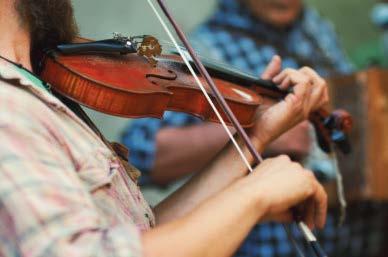





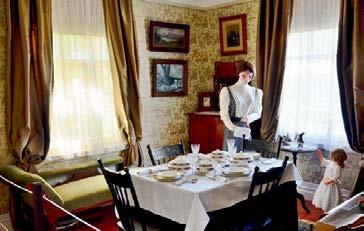


Friday 21 March, 10am–2pm


Be among the first to view our new showhome apartment and experience luxurious five-star facilities with the beauty of a vibrant coastal community.
Brand-new apartments from $695,000^
Features and facilities
The Clubhouse features a wide range of sporting, social and recreational facilities to keep you fit and loving life
Stunning new apartments offering a selection of one, two and three-bedrooms
A vibrant, friendly, fun-loving community
Close to supermarket, bus stop and medical centre
89 Symes Drive, Red Beach Call Adelina on 021 835 131
Nestled on 16 hectares of spacious, beautifully landscaped grounds, this vibrant community feels like a coastal getaway every day of the year. Enjoy every essential amenity close by and an array of exceptional services and facilities.
Serviced apartments from $380,000^ Apartments from $695,000^
Features and facilities
Bowling, putting green, hair salon, swimming pool
Shared lounge spaces, café and resident-run bar
Easy walk to local shops, public transport and medical facilities
101 Red Beach Road, Red Beach Call Kerensa on 09 421 9723
Kiwis waste $2.9 billion in food annually and four simple steps could hold the key to cutting waste
Love Food Hate Waste NZ (LFHW) is a non-profit organisation that works with food businesses, supermarkets, and food rescue organisations to reduce the amount of good food going into the bin from Kiwi households, through a combination of partnerships with local councils and community groups.
International Food Waste Action Week runs from March 17, and this year the organisation is putting a spotlight on smarter meal planning to reduce the country’s staggering $2.9 billion worth of household food waste – down from $3.2 billion in 2023, but still enough to feed 536,000 Kiwis for a year.
HelloFresh, a new partner in LFHW’s mission to reduce household food waste, recently commissioned a report on ‘Understanding Kiwi Household Food Waste.’
The findings show that Kiwis are spending more on food than ever before, but 9 per cent of their weekly grocery spend is going to waste, the organisation says.
LFHW programme manager, Sophie Wolland, says dealing with leftovers can feel like a challenge.
“By getting Kiwis to stay flexible and follow our meal planning steps, we believe we can help everyone in New Zealand to reduce their food waste, save time and money,” she says.
Launching four essential steps (or the 4 Cs) to effective meal planning, LFHW hopes to educate Kiwis and connect them to meal planning tools that work for them, whether it is an app, online meal kit provider like HelloFresh, or physical meal planners to

keep you on track.
Research shows that poor planning is a major driver of increased food waste, with 31 per cent of New Zealanders who experienced more waste saying it’s due to a lack of preparation.
Four simple steps to better meal planning:
• Check your week – Who’s home? When will you be busy or tired?

• Check what you’ve got – See what needs using up in your fridge, freezer and pantry.
• Choose your meals – Plan easy, flexible meals. Plan in your leftovers. Consider downloading a meal planning app or using a meal kit service like HelloFresh, which makes meal planning effortless.
• Create your list – And take it with you.
Resources and tools will be released online via LFHW and its partners this month. Visit www.lovefoodhatewaste.co.nz/dobetter-meal-planning/ Photo,
Helping Kiwis to remember these steps, LFHW will release its Free Money Saver Meal Planner along with meal planning apps, which make it easy to reduce food waste at home.
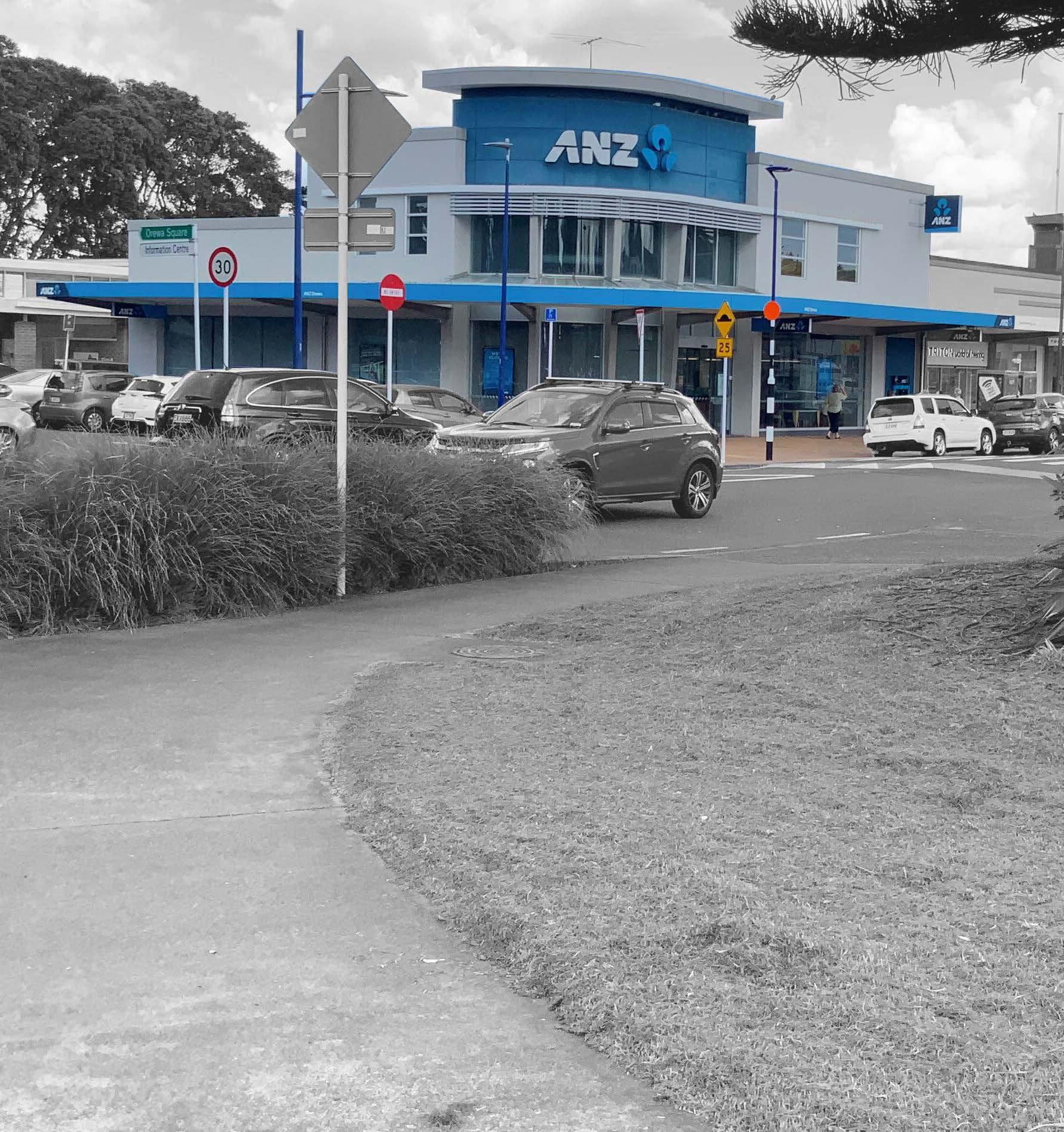
(6)
(4)
(8)
(6)
(7)
(4)
(10)
Economic depression (5)
23 Very hungry (8)
25 Withdraw (7)
26 Speaker’s platform (7)
28 False front (6)
29 Break loose (6)
30 Official count (6)
33 African scavenger (5)
35 Big wild cat (5)
36 Basin stopper (4)
38 Midday (4)
43 Alcoholic drink (5)
44 Close examination (8)
45 Accessories (6)
46 Keeping from decay (10)
47 Sit for (4)
48 Recovery setback (7)
49 Kit out (6)
50 Precise (5)
52 Blueprint (4)
53 Candidate (7)
54 Highly decorated (6)
59 Phobic rash (anag)(10)
61 Beginning (5)
65 Precious metal (8)
66 Female fox (5)
67 Maybe (7)
Deserves (6)


New Zealand generates a lot of waste. According to Ministry for the Environment (MfE) figures, each household sends around 700 kilograms of waste to landfill annually. Despite our reputation as a clean and green country, we actually rank among the worst in waste production and recycling compared to other OECD nations, ranking 29 out 38 countries in terms of waste production, third highest generator of municipal waste, and second worst recycling nation in the OECD.
Unfortunately Kiwis have a predominantly “single-use throw-away culture” and the government is seeking ways to change it. It’s policy for waste management is based on the “waste hierarchy”. This prioritises preventing waste first, followed by reusing, recycling, recovering energy, and finally, as a last resort, disposing of waste in landfills. It’s an approach we can apply in our daily lives to reduce the amount of waste we produce and contribute positively to our environment.
Here’s a breakdown of how we can manage different categories of household waste effectively:
Packaging waste, especially plastics, is a major contributor to household rubbish in New Zealand. According to the MfE, 308,169 tonnes is generated annually, with only around 45,000 tonnes of this successfully recycled. It is a major environmental challenge, and the government is currently phasing out single use and hard-to-recycle plastics.
Reduction: Opt for minimal packaging by choosing loose products or bulk purchases. For example, buy cereals and grains from bulk bins using reusable containers, such
as glass jars.
Recycling: Familiarise yourself with plastics recycling. Plastics marked 1, 2, and 5 are widely recyclable through council bins. Hard to recycle items can be dropped off at a Terracycle drop-off point. Check their site Terracycle.com for the one nearest you.
Additionally, selected supermarkets across the Coast offer soft plastics recycling bins for items like bread bags and food wraps. Check recycling.kiwi.nz for your nearest drop-off point.
Food waste
Food waste is another substantial concern, with New Zealand households disposing of approximately 229,022 tonnes annually, about half of which is avoidable. This is not just wasteful but also costly:
Planning: Reduce waste by planning meals carefully, shopping from a list, and storing food correctly to extend freshness. See page 17 for more information on meal food planning.
Composting: Start composting using simple solutions like Bokashi bins, which are great for indoor composting, or worm bins and community compost programs for those without garden space.
Clothing waste
Clothing waste is increasingly problematic, as fast fashion drives more textiles into landfills. According to Greenpeace NZ, around 180,000 tonnes of clothing and textile waste ends up in landfill annually, equivalent to 6429 shipping containers. However, simple choices can help reverse this trend:
Buying less: Invest in high-quality clothing that lasts longer, rather than purchasing disposable fashion items. Wear your clothes for longer.

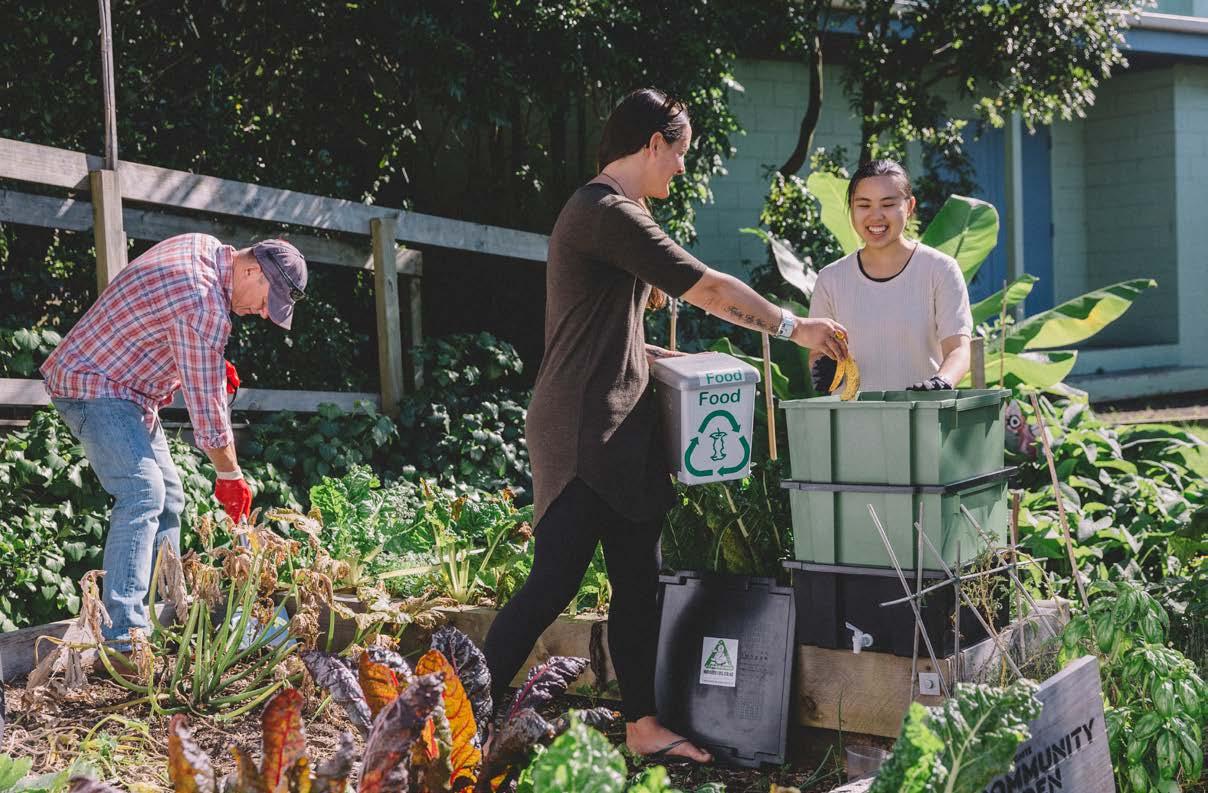
Recycle: The Hibiscus Coast has a wealth of fantastic op shops so support a good cause and help keep textiles out of landfill.
Swaps and Repairs: Participate in local clothing swaps or attend repair workshops offered by community groups to give clothes a longer life.
Donations: When donating, ensure clothing is clean and in good condition so that it remains useful rather than becoming another form of waste. Many unsellable donated clothes are either sent to landfill or shipped off shore to the Pacific or Papua New Guinea. Textiles such as sheets and towels can be donated to the SPCA or animal sanctuaries, but check first if they need them.
Paper waste
Paper waste, including newspapers, packaging, and junk mail, remains significant despite digital alternatives: Reduction: Go digital whenever possible –opt for online newspapers, magazines, and billing.
Recycling: Utilise community recycling programmes, roadside collection, and recycling centres to ensure paper waste is effectively reused. Check with your local school if they can reuse good quality used paper for projects and drawing.
Domestic construction waste
Construction and demolition waste contributes significantly, making up 40 to 50 per cent of total waste sent to landfills in New Zealand. Practical solutions include: Recycling and donations: Offer usable materials to local handymen, community repair shops, or post in community groups to repurpose construction leftovers. Plan carefully to ensure you don’t over buy materials.
E-Waste
Electronic waste, is rapidly growing due to increasing reliance on electronic devices. Improper disposal can cause significant environmental harm: continued p20





At Cato Bolam, our expert Environmental Team specialises in ecological solutions for land development that deliver lasting value and long-term resilience.
“Helping landowners add value to their properties while navigating a complex process is incredibly rewarding,” says Myles Goodwin, Planning and Environmental Director at Cato Bolam, Orewa. “Many of our clients want to develop their land while preserving its coastal or rural character— we provide the expertise to achieve both.”
If you’re planning to subdivide, develop, or explore a Transferable Title Subdivision in the Rodney area, ecological

input is essential. With over 50 years of experience delivering successful projects in the region, Cato Bolam’s Environmental Team can support you with:
Pre-purchase ecological inspections & due diligence
Technical expertise to gain Resource Consent
Restoration & enhancement
Wetland & stream assessment
Implementing consent conditions
Land contamination
Book your free discovery call with our Environmental Team today—0800 2 CATOBOLAM.

Proper disposal: Drop off unwanted or broken electronics at specialised e-waste collection points, such as the Whangaparāoa Community Recycling Centre.
Donations: Donate functional electronics to local community groups or schools rather than discarding them.
Hazardous household waste
Hazardous materials, including paint, chemicals, batteries, and pesticides, require careful disposal to prevent environmental contamination:
Safe disposal: Always use designated dropoff points, such as local recycling depots or
scheduled hazardous waste collection days organised by the council.
Recycling resources
Whangaparāoa Community Recycling Centre, 637 Whangaparāoa Road, Stanmore Bay. Ōrewa Repair Café, Ōrewa Community Centre, first Saturday of the month. Bring your broken or damaged items and local volunteers will fix them for you for free. Hibiscus Coast Zero Waste hibiscuscoastzerowaste.co.nz
March 23, Hibiscus Coast Zero Waste’s Menders & Makerspace, Whangaparāoa Library, 10am-2pm. Learn how to mend or upcycle your old clothing. Free event. 16+..
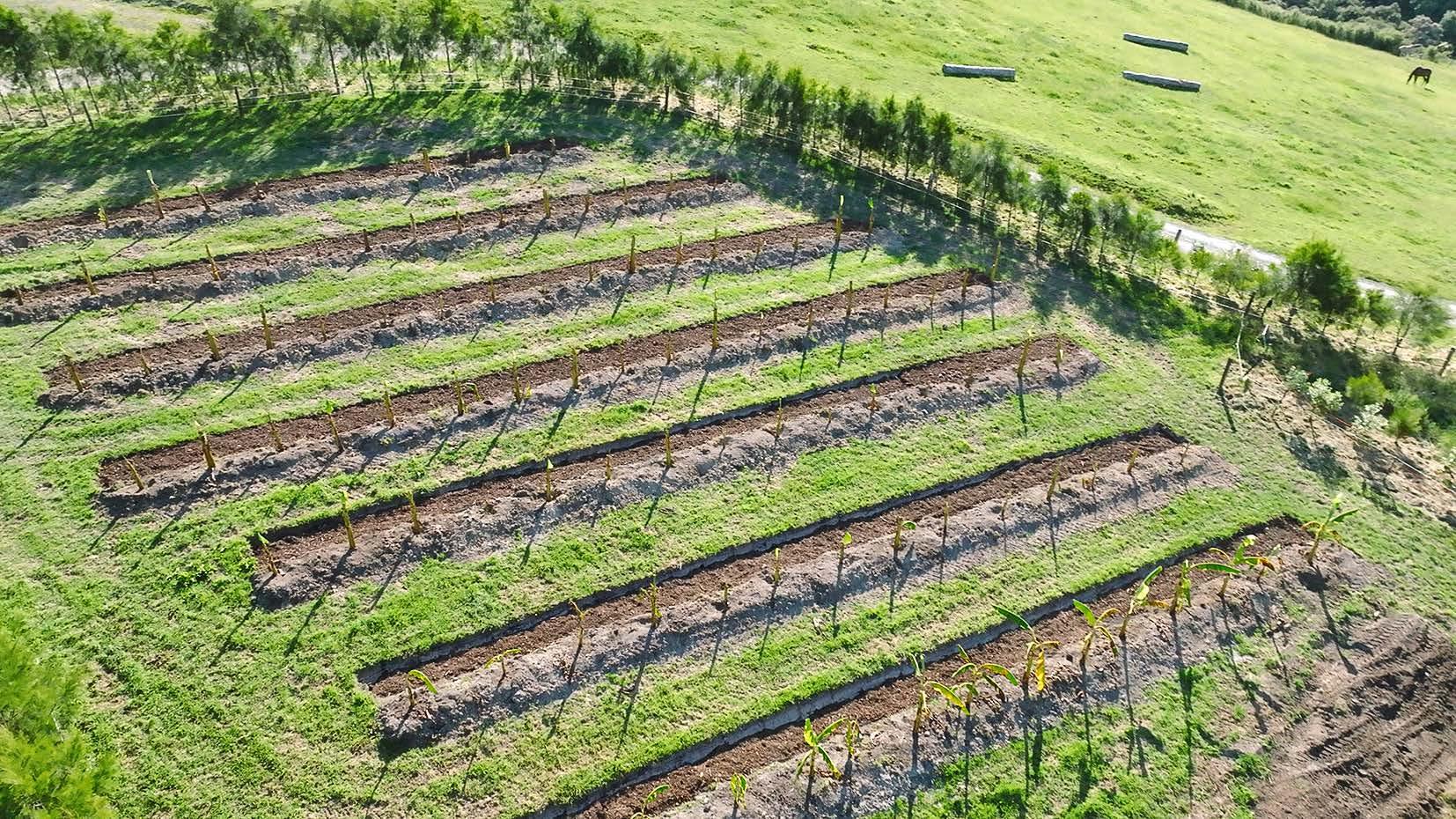
A simple but effective plan to turn commercial food scraps into soil has been operating successfully on the Hibiscus Coast for more than a six years and is ready to grow, but to do so, it needs to collect even more food scraps from local businesses.
The project, called City to Farm, is operated by Hibiscus Coast Zero Waste. It has proved to be an innovative solution to the large amount of food scraps that are binned every day and end up in landfill, where they generate methane. Binning food scraps also wastes a resource that can help transform clay soil into a rich, friable and fertile growing medium.
Scraps are collected from a number of local businesses, pre-schools and retirement villages and taken a short distance to two farms in Wainui where they are improving soil and feeding a thriving banana plantation. So far, more than 300 tonnes of food scraps have been diverted by the scheme.
Auckland Council has recognised this effort as climate action, since topsoil building improves water infiltration, soaks in groundwater, lessens erosion and therefore buffers against extremes of drought and flooding. The project also uses biochar, which has multiple benefits to both soil building and compost production.

The introduction this year of a related project, Rural Adaptation and Resilience, aims to help rural property owners turn unproductive land into food producing land via on-farm composting and soil building involving City to Farm and the Kaipara Regenerative Farming Group. However, to help this expansion continue, more food scraps are needed, If your business has food scraps going into the rubbish bin, City to Farm wants to take them off your hands. To find out more, email info@citytofarm.co.nz Note: The City to Farm collection is only for early childhood centres, schools and businesses.

Jenny Hanwell, Hibiscus Coast Forest & Bird j.hanwell@forestandbird.org.nz
Most people only see these nocturnal troublemakers when they end up squashed on the road, not thinking anything of it and definitely not seeing the damage they cause to our forests. But possums are a problem in New Zealand simply because they are in the wrong place, and it’s too late to send them back to Australia.
In 1887, New Zealand settlers decided to release possums into the bush to add something “useful” to this “empty” landscape. Thinking they were herbivores, “Acclimatisation Societies” of the time didn’t know how much damage possums could do. In fact, possums were even protected by law from 1889 to 1947. Eventually, it became apparent that the trees and shrubs of New Zealand didn’t have the defences to cope with an onslaught of possums as they thrived and became widespread, with more being released into new areas.
One of the issues with possums is that they have favourite trees that they strip of leaves, fruits and flowers, preventing natural forest regeneration and thinning the canopy. However, possums proved to be even more of a problem for our ecosystems when it was discovered that they were not herbivores but opportunistic omnivores, sniffing out birds’ eggs and chicks, native insects and even lizards to eat.
In the 1980s, when the population was at its peak, there were an estimated 70 million possums in New Zealand, consuming something like 21,000 tonnes of vegetation a night. That’s the equivalent of a large container ship full of leaves, fruit and flowers, as well as those more worrying snacks.
Forests damaged by possums are more vulnerable to extreme weather events, with more rainfall reaching the soil and a sparse understorey due to seeds being eaten by possums and rats. Orchardists and home gardeners have also noticed significant damage.
As with many of the harmful creatures brought here by humans, it’s up to us to set things right and restore the balance of nature before it’s too late. Doing nothing

isn’t an option. If we keep the possums, we’ll lose much of our native biodiversity, which is found nowhere else in the world.
This isn’t just a problem somewhere out in the bush but right here on the Hibiscus Coast. For more than 10 years, Forest & Bird’s Pest Free Hibiscus Coast Project has worked to remove possums from Whangaparāoa Peninsula and surrounding areas, protecting our bush reserves and preventing possums from finding their way into Shakespear Regional Park.
Over the past five years, thanks to the efforts of local volunteers servicing the traps, more than 800 possums have been humanely removed. Our monitoring shows numbers on the peninsula are low. However, as soon as we install new traps on the edge of the project area in Silverdale, dozens of possums are caught. One tree with a hole in it had a possum appear each night as soon as the previous one got caught in the trap and became known as “the possum dispenser”
How you can help
We are launching a new campaign based on an approach we have been testing called “detect and respond.” We need the community to look out for signs of possums in parks and on private land –think scratches on trees, possum droppings and heavily chewed leaves. You might even hear their strange calls at night. Let us know when and where you see them as soon as you can, and we’ll send out one of our possum experts to trap it humanely. Email pfhc@forestandbird.org.nz










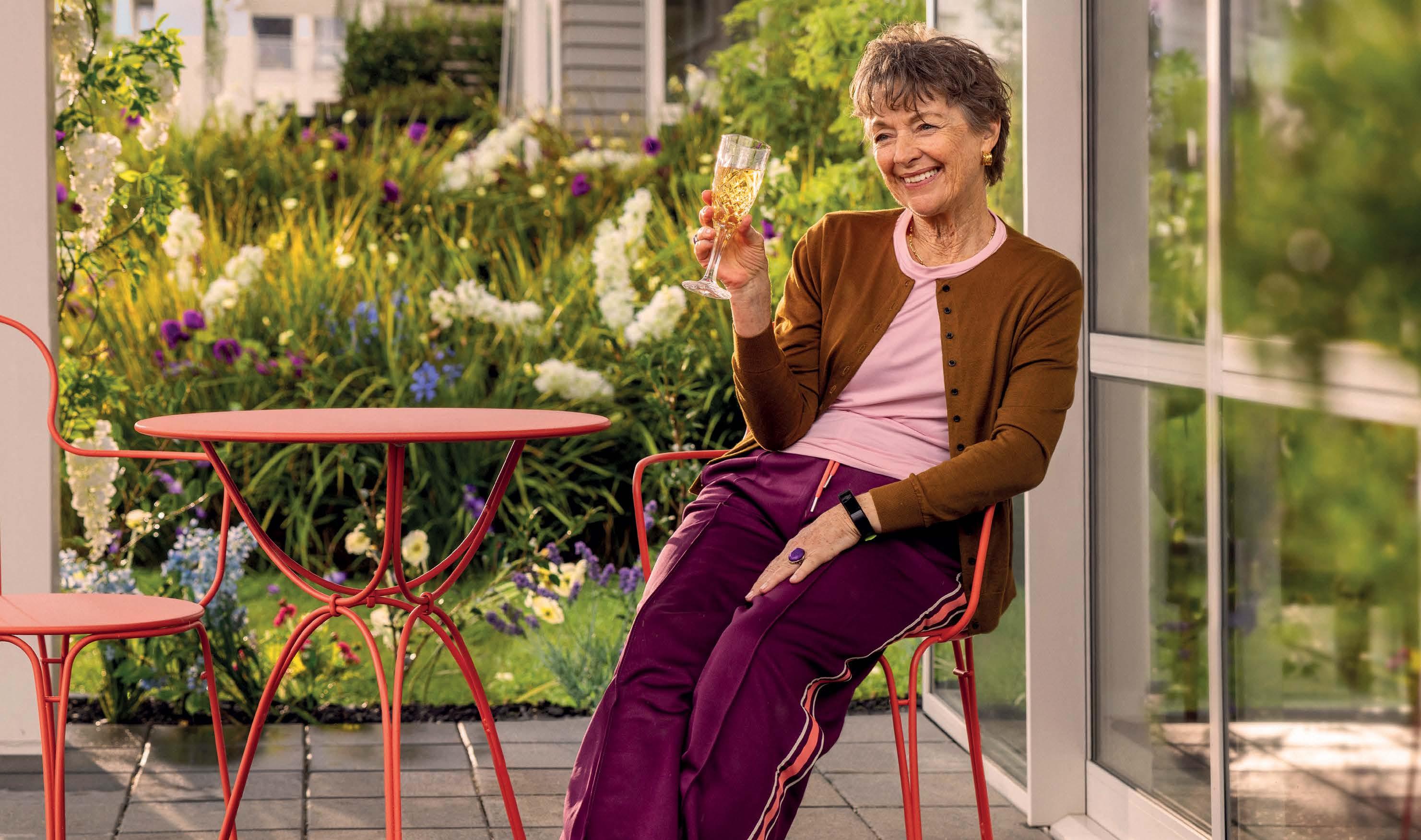
Love not lifting a finger.
At Summerset Milldale, there’s no need to worry about the maintenance of your home or garden. That’s our job. Your job is to focus purely on doing the things you love. That’s what retirement is all about.
Join our upcoming seminar and hear a daughter’s firsthand perspective on her parents’ journey, from the decision to move, right through to moving day. We’ll also share learnings from Summerset residents on what they love about retirement village living and what they found challenging, before we take you on a tour of the village and you meet some of our wonderful residents.
RSVP by Monday 17 March on 09 304 1632 or milldale.sales@summerset.co.nz
Wednesday 19 March, 11am - 11.45am
Summerset Milldale
50 Waiwai Drive, Milldale
Sales suite entrance on Te Taruna Drive
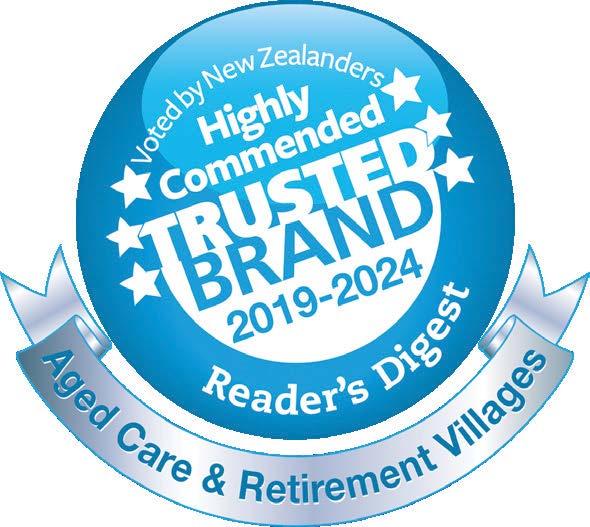

If you have a keen eye and want to help keep your community safe, Hibiscus Coast Community Patrols are on the lookout for new members.
Chair John Redwood says, it’s open to people of all ages, with shifts available during the day and evenings to suit different schedules.
Teams of two patrol the area from Puhoi River to Red Beach and the Okura River, extending west to Wainui and south to Dairy Flat and Coatesville, as well as Ōrewa and surrounding suburbs. Most volunteers patrol twice a month.
The patrol’s responsibilities are twofold: police provide updates on trouble spots and local events that may need extra attention,

while patrollers look out for anything suspicious and report urgent incidents back to the police immediately.
“We have plenty of flexibility, says John, and there is always a backup if someone can’t make a shift. We find the day shift suits retirees, while the evenings shifts are popular with working people.”
Applicants are vetted by the police before becoming patrol members and must complete a period of training working alongside senior patrollers. All members must sign a Declaration of Confidentiality and agree to abide by a Code of Conduct before working with the patrol.

Info: https://hbccommunitypatrol.org/
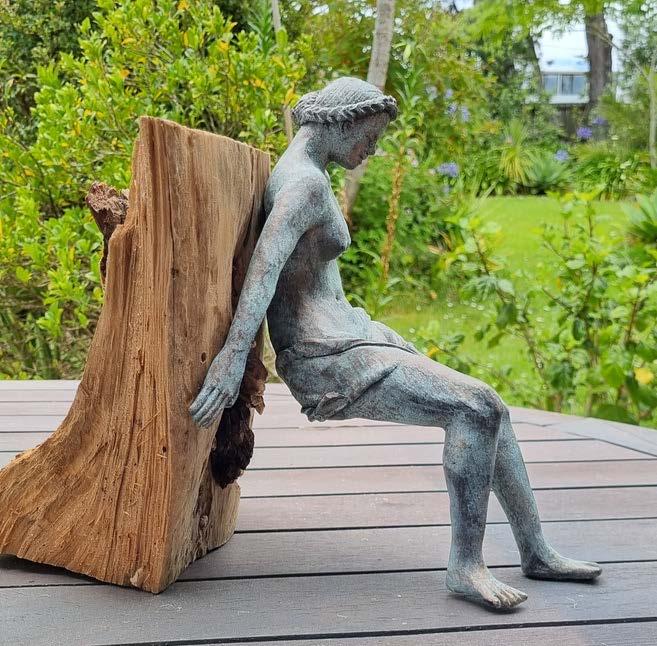

Zane Bryhn, Coastguard Hibiscus crew chief www.coastguardhibiscus.org.nz
The weather that was promised certainly delivered with light winds and sunny hot days, which meant that the Waitemata Harbour was boiling with activity over Christmas and New Year. Our Coastguard unit was kept extremely busy and we were on the water every day from December 26 through to January 14 – 20 days in a row!
There are an average of four people on the boat over an average day of seven hours on the water. That is a total of more than 560 hours that our crew have given to our community to keep people safe on our waters, which I think are impressive stats.
Across the first six days of 2025, Coastguard Hibiscus attended 41 incidents and used over $10,000 worth of fuel. We have also been fundraising by attending events and selling Coastguard Lottery tickets. This is one of our main sources of funding to pay for training, fuel and equipment to keep our crew up to speed and, most importantly, safe. Add another 150 hours of off water activities on top and it shows we have an extremely dedicated crew of 46.
Recreational boating is a fun and relaxing activity, but safety should always come first. Here are some essential safety tips to ensure a safe boating experience:
• Ensure that everyone on board wears a properly fitted life jacket. Children and weak swimmers should always wear a life jacket, even when the boat is not
moving.
• Always check weather conditions before heading out. Be aware of changing conditions, such as dark clouds, sudden temperature drops, or strong winds, and return to shore if necessary.
• Carry life jackets for all passengers, fire extinguisher, first aid kit, whistle or horn, anchor and rope, emergency flares or distress signals, at least two forms of communications, that is, vhf and cell phone.
• Learn and follow local boating regulations and right-of-way rules. Keep a safe speed and maintain a lookout for other boats, swimmers, and obstacles.
• Regularly inspect the engine, fuel system, electrical system, and hull for any issues. Check fuel and oil levels before departure.
Be Prepared for emergencies – know how to use a marine radio to call for help. Just a reminder channel 16 is for emergencies and channel 60/64 is coastguard. Trip reports and requests for assistance can be made directly to coastguard using those channels. The other option is calling *500 from your cell phone. Always inform someone on land about your trip plan, including your expected return time. While we love what we do, ensuring that you are prepared can be the difference between coming home safe and sound or not.


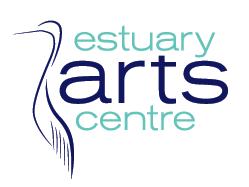



EACH number in our CodeCracker grid represents a different letter of the alphabet. For example, today 21 represents K so fill in K every time the figure 21 appears. You have one letter in the control grid to start you off. Enter it in the appropriate
We’re bringing a smarter approach to 70+ retirement living.
Our unique operating model is designed to protect the nest egg you’ve worked hard for. A lower deferred management fee, share of capital gains and guaranteed buy back are just some of the features packed into our offer.
We think we have something special here at Vivid Living, so come along and see for yourself. vividliving.co.nz 0800 173 323

$10K TO SPEND YOUR WAY!
We want to help you celebrate your new retirement home, with a $10,000 cash gift when you purchase one of our Red Beach or Karaka villas!
Why not pop in for a visit and explore our village? This could be your best move yet. Our final Red Beach villas are selling now from just $695,000.
Come visit us today: 14 Tiromoana Dr, Red Beach 0800 173 323 | vividliving.co.nz




Dr Peter Hall hallpeter708@gmail.com
Humans and alcohol have been getting together for a long time. Presumably, the process of fermentation of starches was discovered accidentally, but it really took off when we embraced an agricultural lifestyle and had a bit of barley left over to experiment with.
It didn’t take long to realise that alcohol brings both pleasure and danger, on one hand “gladdening the heart” and on the other fuelling aggression and folly. In New Zealand, our attitude to it is quite conflicted. Alcohol is a socially acceptable mindaltering drug, strongly associated with celebration, companionship and relaxation, but a recent report says alcohol-related harms cost us nine billion dollars in 2023, taking into account domestic violence, accidents, illness, lost productivity and the huge burden of fetal alcohol syndrome. Attempts to ban alcohol (prohibition) have been spectacular failures, at least in Western countries, so we are left to manage it in other ways. Hence, public health education is focused on high-risk situations, such as pregnancy, drink-driving and the appeal of alcohol to young people. But in the end, individual responsibility is a big factor and for that to work, people need practical guidelines regarding safe drinking. We measure alcohol intake in terms of “standard drinks”. Even though these appear on every bottle and can, I suspect not many people would have an intuitive understanding of what a standard drink is. Even less helpful is the knowledge that an SD is 10g of pure alcohol.





“Low-risk drinking” is different for men and women. Women are advised to limit themselves to two SDs a day and 10 SDs in a week. Men can tolerate a bit more: three SDs a day and up to 15 per week. In addition, everyone is encouraged to have at least two alcohol-free days per week, something which many people who consider themselves responsible drinkers baulk at.
These guidelines automatically rule out binge drinking, which for some young men in particular is their favourite weekend activity. I still can’t figure out how a night that you can’t remember can be such a great experience, but sadly it is incredibly popular. There are, of course, people who shouldn’t drink at all, given a history of dependency or misuse, or in combination with medical issues and certain prescription drugs. So how does an SD relate to our commonest alcohol choices? A standard bottle of wine at 13 per cent alcohol contains 7.7 SDs. Not a snappy number to remember, but in effect a third or half a bottle is your daily allowance. Obviously, a low alcohol wine, at about nine per cent, gives you more freedom. But beware of the top-ups which can quickly make you lose track. Beer is mostly four to five per cent, which means a 330ml can or bottle equals one SD.
If you are into top shelf, a litre bottle of spirits can contain up to 37 SDs! So have a little think about the recommendations.
Nat King Cole sang that summer was a time for “soda and pretzels and beer”. Maybe throttle back on the last one?


Library encourages ‘play for all’
Toy Library Awareness Week ran from March 2 to 9 celebrating the theme ‘Play for All’ – highlighting inclusivity across all ages, abilities, learning styles, communities, and budgets.
Shannon Groves, who runs the community toy library at Whangaparāoa Baptist Church, says families can access more than 1000 play resources for a low annual membership fee. The library operates on a borrow-andreturn system, allowing families to regularly swap toys for something different.
“Current brain development research shows that play is the primary way that children, from birth to seven years old, learn. We are here to support your children to play,” she says. “From slides and ball pits to dollhouses, train sets, Duplo blocks, musical instruments, board games, puzzles,
and beach toys – you’ll find them all at the toy library.”
A team of volunteers runs the library, with funding grants helping to cover operating costs and new resources. Shannon says the service isn’t just for young children, with play resources available for older primary schoolers as well.
“For less than $3 a week, families can access all our resources for a whole year.
The toy library is open on Wednesdays from 10am to 11.30am and Saturdays from 9am to 10.30am, downstairs at Whangaparāoa Baptist Church.
For more information, visit www. wgptoylibrary.org.nz/ , email toylibrary@ wbc.org.nz, or find them on Facebook and Instagram.



















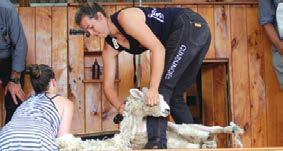
Join us onsite to explore Auckland’s most exciting coastal development! progress, discover for sale, and meet our Partner Builders. ― Food Vendors ― House & Land Packages ― New Sections Release Don’t miss this opportunity to experience Hobbs Bay Estate firsthand!
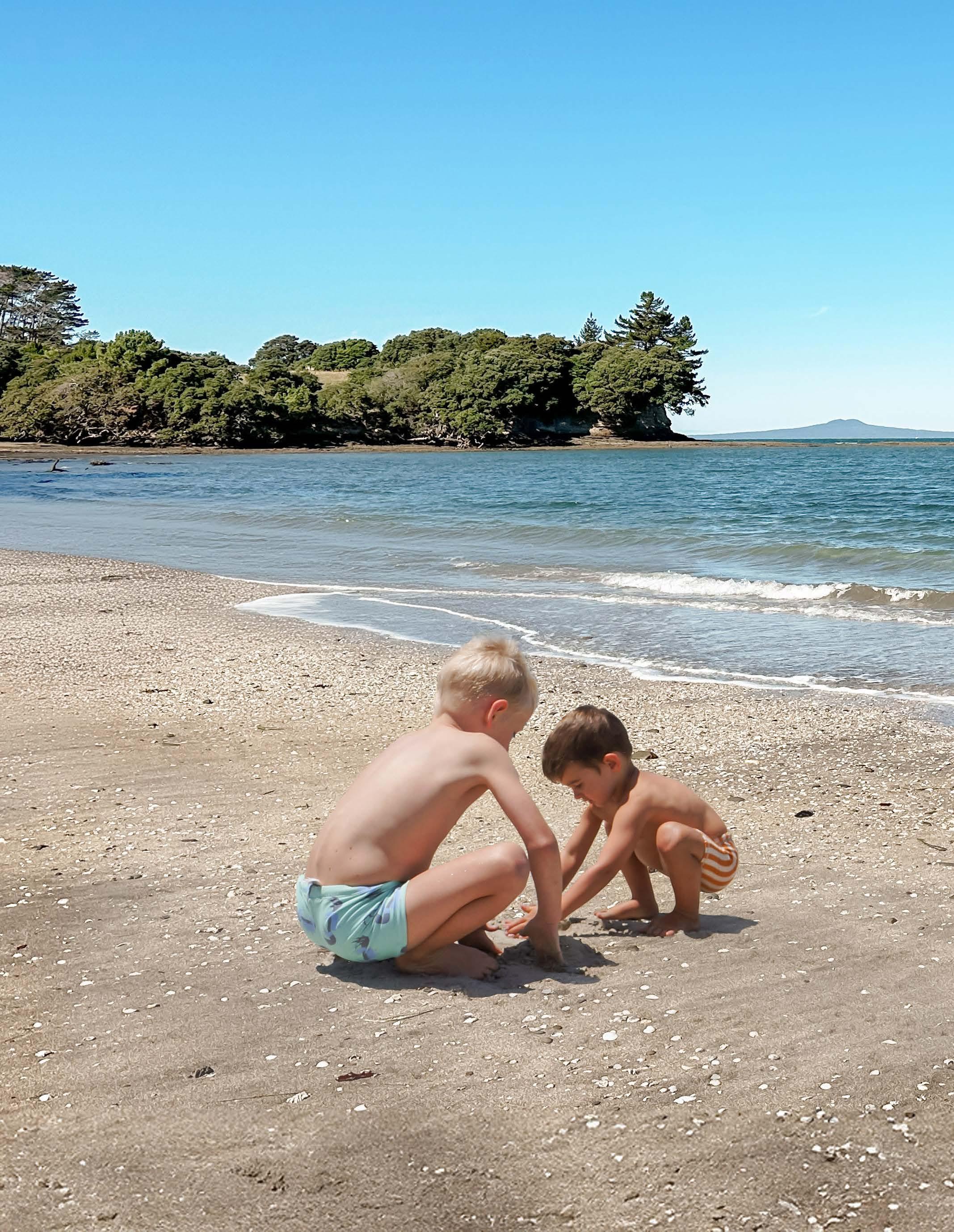

After more than 16 years serving the Hibiscus Coast Anglican parish, Reverend Steve Down is retiring from his role.
He came to Ōrewa in September 2008, and since then, he and his parishioners have seen remarkable growth, both at St Chad’s and its associated churches, Holy Trinity in Silverdale and the small chapel in Waiwera.
“It’s been a lovely journey,” Reverend Steve says, “and to finish my time here with the completion of the new hall is just wonderful.”
Looking back, Reverend Steve says one of the major highlights has been seeing more and more people come to church,” he said. “There was a period when our outreach into the community really began to make a difference. We started initiatives like school lunches, our monthly market every first Saturday, and community dinners in partnership with Love Soup. We have wonderful teams from both the church and the wider community who have made these initiatives possible.”
Reverend Steve hopes this strong community outreach continues, especially through the use of the old vicarage as a community hub. “It was really good. I hope this spirit continues.”
Over the years, Reverend Steve has witnessed significant changes in the community.
“When I first came here, Ōrewa was considered Auckland’s retirement town. Now, with new housing developments, he seen many younger families moving into the area, and the parish has worked hard to connect with them, he says.
The physical landscape has also transformed.
“When we first arrived, the Silverdale town centre didn’t even exist. Ōrewa has grown from a quiet seaside town into a bustling community filled with cafes, restaurants,

and shops,” Reverend Steve says.
Throughout these changes, the community’s support has been unwavering, and the parish built strong ties with the local business association and social services.
“It’s always been important for me to know where to direct people for professional help when needed,” he says.
Now, Reverend Steve plans to step back and


take some well-deserved rest with his wife, Linda, who also works in the parish office.
Reflecting on his departure, Reverend Steve says it’s the people he will miss the most. My final Sunday service was packed with familiar faces. But finishing at the church doesn’t mean finishing in the community. I told them, please, if you see me around, do come and say hello.”

your independence and freedom with our safe, reliable companion driving service
We can drive and accompany you Medical and other appointments
ocial occasions
your pets to the vets
Mobility Scheme cards acted supplie (Vendor Number: VBD580)
essential, call D Ph: 09 428 4490 / 021 035 0431 hibiscus@drivingmissdaisy.co.nz .drivingmissdaisy.co.nz
Miss Daisy Hibiscus Coast
However, it’s not quite goodbye, as Reverend Steve and Linda will be returning for the opening of the new hall at St Chad’s later this month.
“It’s been a huge accomplishment, and one that couldn’t have happened without the community support.”
The parish is in the process of selecting a new vicar.





Proudly supported by:








The Ducky Derby is on this weekend, bringing families together for entertainment, and friendly competition – all in support of a great cause.
“The Ducky Derby is a great family day out.” says Georgie Wallace, head of the Ōrewa Beach Kindergarten Parent Committee.
“We attended the Ducky Derby before any of our children were even at the kindy and now our last is in her final term. It is an incredibly fun day for the kids with games and prizes, a second-hand toy and book stall, and the duck race is the icing on the cake. I never get sick of seeing those 750 ducks coming down the estuary.”
With last year’s event seeing a record turnout and a sellout race, organisers encourage attendees to buy their duck race tickets early to avoid missing out.
“I love the way our Ducky Derby brings the community together to fundraiser for our kindergarten which opened over 50 years ago. We are hoping to upgrade our outdoor shade cloths to offer more sunsafe spaces. This event has been running for many years and the kindy relies on and
value local businesses and Rotary who support it.”
Visitors can expect a variety of entertainment and activities throughout the morning, including: games and prizes for kids, delicious food stalls, and live performances.
The main attraction is the race itself, where 750 yellow ducks will take to the Ōrewa Estuary, cheered on by the crowd. The first three ducks to cross the finish line will win prizes, but this year also includes a twist –three lucky last ducks will each take home a cash prize!
Whether you’re a long-time local or new to the area, the Ducky Derby is the perfect chance to join in on the fun, meet new people, and create lasting memories with your family.
For more details on how to participate, sponsor the event, or purchase a duck, contact Ōrewa Beach Kindergarten 09 426 4543 or email duckyderbyobk@gmail.com
Saturday, March 15, Western Reserve, Ōrewa (by the Ōrewa Skatepark) 9am12pm. Duck race: 11am.








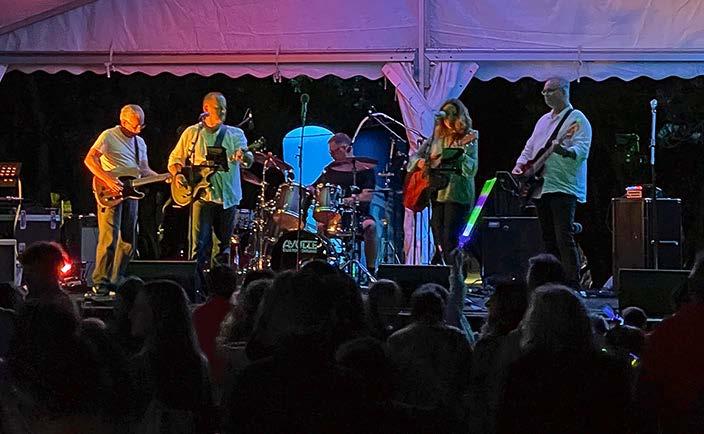


The Northern School of Performing Arts (NSPA) Dance Team has qualified to compete at The Dance Awards, a prestigious international competition to be held in Las Vegas in July 2025. This achievement makes NSPA the first dance school from New Zealand ever invited to participate in this global event. Seventeen dancers, aged between 10 and 17, will represent NSPA at the competition. Eight of these dancers train at the Coast studio, while the remaining dancers are
from the Takapuna studio. The team will also compete at the KAR Dance Awards in Los Angeles and the Rainbow Dance Awards in Las Vegas.
The team is overseen by dance director Alicia Chadwick-Cook.
To support their participation, the Coast dancers are holding a fundraising quiz night at the Manly Bowling Club on Saturday, March 22. Info: https://northernschoolofperformingarts. co.nz

Deliverers are urgently wanted to deliver Hibiscus Matters newspaper | Suitable for the retired or semi retired, Mum’s wanting to get out of the house, Students (11+) wanting to take a step into the workforce or anyone just wanting to get paid for walking around their neighbourhood. Rosemary 021 030 0263, hmdelivery@localmatters.co.nz

Skin cancer doctors often use a simple rule of thumb when examining skin lesions: is the lesion pigmented? The presence of brown, black, grey, or other evidence of melanin in the lesion raises the possibility of melanoma. However, this rule doesn’t always hold true, particularly in the case of amelanotic melanoma, a type of melanoma that lacks pigment.
Amelanotic melanoma, also known as Lumpus Pinkus, typically presents as an unusual-looking pink area. It may have a fairly uniform appearance and can be elevated, which is a more serious sign.

Bleeding is a very serious indicator. The signs of abnormality in amelanotic melanoma are much more subtle compared to pigmented melanomas, which often exhibit chaos in colour which make a problem more obvious. Whilst uncommon, amelanotic melanoma is not rare, with about 10% of all melanomas having no or very little pigment.
Due to the challenges in diagnosing amelanotic melanoma, clinicians maintain a very low threshold for diagnosis. Amelanotic melanomas are often more advanced when diagnosed because they are harder to identify for both patients and clinicians. As a result, clinicians always keep the possibility of amelanotic melanoma in mind, even when considering treatment options.
Before using creams or liquid nitrogen on a pink lump or flat lesion, clinicians must carefully consider whether a biopsy is necessary to rule out melanoma. A biopsy prior to treatment is usually a good option, as it provides certainty in diagnosis and treatment and is minimally invasive. Applying creams or liquid nitrogen to an amelanotic melanoma before an accurate diagnosis can make the lesion appear different and complicate the diagnostic process. The golden rule is if you do not know what it is do not treat it until you are more certain.
Amelanotic melanoma is a particularly tricky diagnosis for inexperienced clinicians. It is crucial to remember that any elevated, firm, growing lesion, even if it is pink or non-pigmented, requires a thorough review.
Dr Dave Hassan
MBChB DipPaeds DipCPU FRNZCGP
ACCSCMS ACCDermoscopy
Associate SkinSafe Ōrewa

Mon-Fri 8.30am-5pm | 18 Florence Ave, Ōrewa Clinic: 09 242 7546 | support@skinsafe.co.nz skinsafe.co.nz



Dan Bungard has a vision for Hibiscus Coast Basketball. He has been the director for 17 years but before that he was a keen player.
He grew up on the Coast and his dream is to see the sport have a permanent home here.
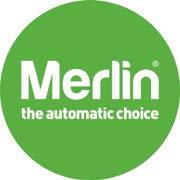

Monster Housewash and Gutters is a father/daughter run business, run by Tony and Ashleigh Jillings. They have lived on the Hibiscus Coast for almost 30 years. Both Tony and Ashleigh take great pride in their work, ensuring customers get an excellent job from quoting right through to invoicing, with before and after photos always supplied. They can help with all your waterblasting needs: House Washing // Gutter Cleaning // Driveway Cleaning // Deck Cleaning // Fence Cleaning // Industrial Buildings // Commercial Buildings // Vehicles and much more Free Quotes

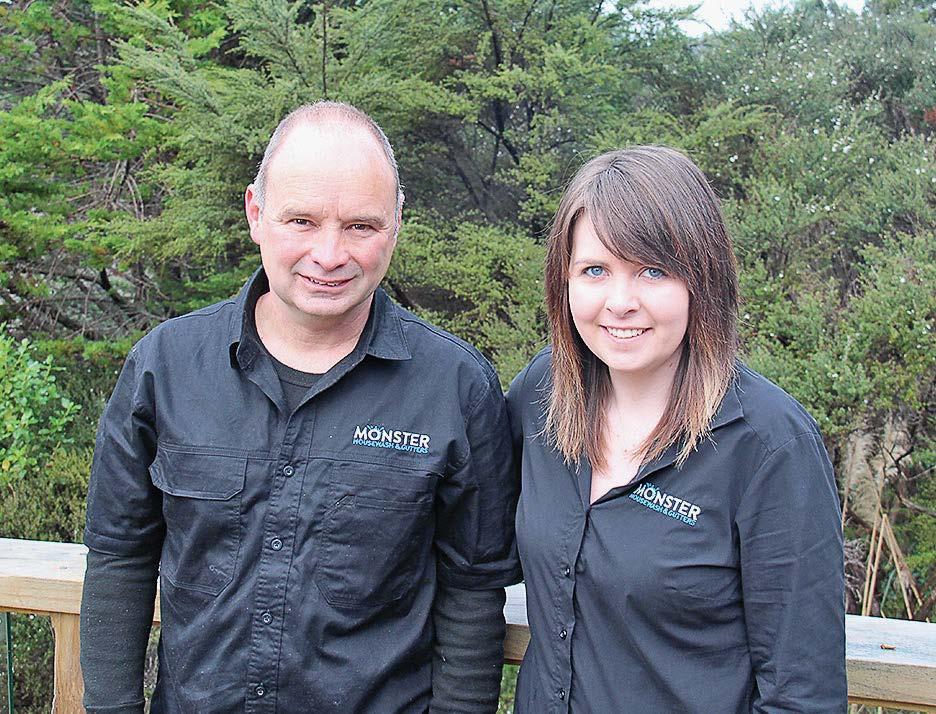
Basketball’s popularity has grown dramatically over the past decade he says, driven in part by a culture shift. It’s also the fastest growing sport in New Zealand.
“There is a culture around the sport that is really exciting, and a big part was the Breakers success then Steven Adams breaking into the NBA. But basketball is such an adaptive sport, you can play a number of combinations, so you’re not put into a box,” he says.
But its success means there is a shortage of at least 500 courts countrywide, and now with 800 players across Coast Basketballs’ five clubs, they are reaching a tipping point where they need a dedicated facility.
“Just how we do that and what form it takes is something we are trying to figure out, but we will definitely make it happen, he says.”
However, Dan’s vision is to grow Coast basketball to 1200 members, especially at the grassroots level. He has a strong belief in using the sport to develop the Coast’s youth and working with the community to pass along experiences and knowledge. Already they have had one player, Liam

Judd, reach the NBL.
“When he comes back to the Coast, the kids just love to hear from him.”
But it’s not just about aiming for the top leagues, Dan says. The organisation has leagues for all ages and recently launched an adaptive programme. Dan is also keen to encourage more women and girls into the sport.
For information on term two programmes visit www.hibiscuscoast.basketball




































If you’re a senior and you’d like help with your phone, laptop or tablet, there’s now a free weekly service available in Whangaparāoa. The friendly volunteers from Digital Seniors will be at Whangaparāoa Library on Wednesdays, 10am-12pm. You can drop in and get free one-on-one help with learning about your digital device. All volunteers are police-vetted so you can feel safe. The aim is to support seniors to feel comfortable and empowered with technology and allow them to learn at their own pace in a friendly environment. Coaches are respectful and patient and happy for seniors to write things down as they go or practice it until they’ve got it. Whether its exploring the internet, staying up to date with the news, downloading an app, connecting with loved ones, shopping online or even joining a dating app, Digital Seniors can help seniors learn how to do what they want to do. No need to book, just drop in. Info: www.digitalseniors. co.nz or call 0800 373 646.



















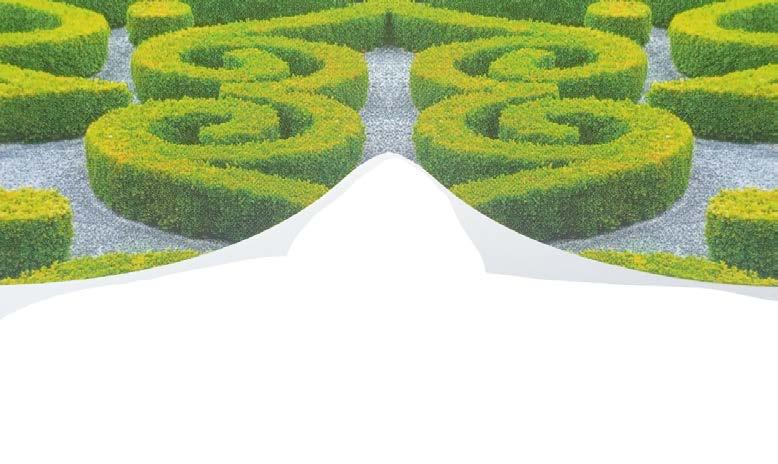













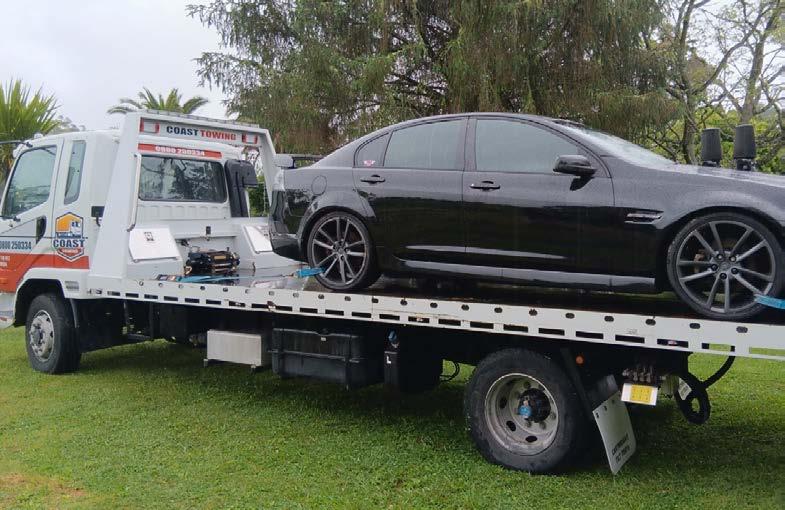


































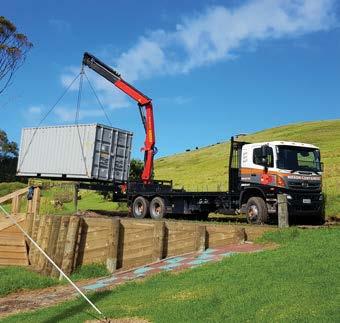














HIBISCUS COAST FRIENDSHIP CLUB, Meet at the Bridge Club, Edith Hopper Park, Manly, 4th Wednesday of the month, 10am for talks and coffee. We enjoy meetings, movies, outings and luncheons. Join us phone Peter or Jeanne 426 8675.
RED BEACH COMBINED
FRIENDSHIP CLUB Meet every 3rd Wednesday of month, 9.30am. Presbyterian Church, 107 Centreway Rd, Ōrewa. Enjoy meeting friendly








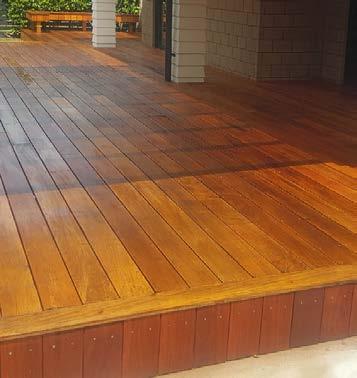






people for morning tea, interesting speakers, dinners and outings. Please call Colleen Murray at 021 112 3409.
HIBISCUS COAST ORCHID SOCIETY Meet 2nd Sunday of the month at the Masonic Hall, 103 Centreway Rd, Ōrewa from 1pm. New Member welcome. Ph Judy 027 4757 708.
HIBISCUS COAST HIGHLAND
PIPES AND DRUMS Free tuition from experienced tutors to learn bagpipes and snare and tenor drumming. No previous experience needed to learn. Ideally from 10 years
of age but all levels of playing and supporters welcome. Wednesday 7pm practices, St Johns Ambulance Hall 36 Silverdale Rd Silverdale. Drop in to check us out. Contact Leslee O’Connell 027 426 7170 or Bob Logan 09 424 1838.
HIBISCUS SPIRITUAL AWAKENING AND HEALING CENTRE Meet every 2nd Wednesday, 7.30pm. Healing, spirit communication (different Medium on Platform each time) All welcome ($5 to cover costs). 9e Annalise Pl (off Forest Glen Rd) Ōrewa. More info Lynda 021 115 2720.




28 Facade, 29 Escape, 30 Census, 33 Hyena, 35 Tiger, 36 Plug, 38 Noon, 43 Vodka, 44 Scrutiny, 45 Extras, 46 Preserving, 47 Pose, 48 Relapse, 49 Outfit, 50 Exact, 52 Plan, 53 Nominee, 54 Ornate, 59 Archbishop, 61 Onset, 65 Platinum, 66 Vixen, 67 Perhaps, 70 Nirvana, 71 Merits, 72 Reject, 73 Foetus, 77 Ideal, 78 Saga, 79 Sign, 80 Tofu.
ALARMS SECURITY AND FIRE, MONITORING, CCTV, servicing & installation, all brands 027 553 3032 www.tdssecurity.co.nz
CARPET LAYING, CARPET RE-STRETCH, VINYL LAYING, CARPET REPAIRS
Over 30 years’ experience. Contact Dexter 027 4956 436
DRAINLAYERS
For your drainage requirements. Certified drain layers. All Round Drainage Ltd: Ph/txt 0274 890 851 email jeff@ardnz.com
HOUSE WASHING - SOFT WASH / LOW PRESSURE / CHEMICAL WASH
Also Window Cleaning / Gutter Clearing / Decks / Concrete. Careful service, reasonable rates. qualitywash.co.nz / 021 0579743
PUMP DOCTOR
WATER PUMP & FILTER SERVICES.
New installs for all your water pump requirements. Ph 0274 430 654.
SEMI RETIRED BUILDER Decks, Fences, Pergolas.
Quality work at a reasonable price.
For FREE quote & design if needed. Ph/txt Craig 022 182 2543
ARKLES BAY PAINTERS/DECORATORS
In the area for the area. Contact Shane 021 0813 8481.
CARPET ADVICE, FREE QUOTE FOR STEAM CLEANS, Carpet Repairs, 35 years experience Dwayne 027 499 7929.
PEST CONTROL Eradication of rats & mice. Competitive Rates. Ph 426 2253 Ph 027 286 7321, www.noratsandmice.nz
TRIM & PROPER SOLUTIONS Hedge trimming • fruit tree & orchard pruning • formative prunes • stump grinding. Ph 020 4027 6200, trimandproper@outlook.co.nz
TO BUY, RECORDS/LP’S 09 428 1587 txt 0210 258 3437
FURNITURE REMOVALS
exp Owner Operator 30 years. Single Items to Flat/House lots. Silverdale Based. Ph Gavin 0274 973 867
CAN’T MAKE IT TO A HAIR SALON? No problem I can come to you. Qualified Hairstylist providing cutting and blow wave services. Please phone Julie 021 112 8015
HYPNOTHERAPY
Lose weight. stop smoking. anxiety and depression, confidence, self esteem. Ph 021 635 966 www.hypnotherapy2succeed.co.nz
PART TIME WORKER REQUIRED at automotive workshop. Suit semi retired mechanic, engineer or handyman. Role consists of opening up, cleaning and repairs around the workshop. 15 hours/week. 7am to 10.30am. Ph 426 5351.
ELECTRICAL WORK Installation/upgrade of switch boards, down lights, power points, ceiling fans, ovens and hobs. Spa power, EV charger power. All small jobs welcome. Ronnic Electrical Ltd 021 752 430. A SMART REPAIR Service for F&P smartdrive washers, F&P/Simpson dryers. Prompt service ph 021 168 7349.

VIDEOS TRANSFERRED to DVD/hard drive. Phone or text Te Totara Video 021 777 385.
This is an ideal chance to make a change in your life and try something different with a great company. If you are thinking of re-joining the workforce or looking for extra hours this role may well suit you. We are looking for Casual On-Call School Bus Drivers.
What you need:
• Class 2 Licence
• P endorsement licence (we can help you obtain this)
• A responsible and caring approach
If you want to be part a business that is making a difference in your community then we want to hear from you!
Our recruitment process includes a Drug and Alcohol Test and Police Vetting check. Don't let this role drive by! Apply today! Apply here online or email carol.monteith@gobus.co.nz


7:28am1.2 1:40pm2.8
2:17am2.8 8:22am1.2 2:29pm2.8 8:37pm1.1 3:15am2.8 9:21am1.2 3:26pm2.8 9:40pm1.2 4:18am2.8 10:21am1.2 4:29pm2.8 10:46pm1.1 5:18am2.9 11:20am1.1 5:34pm2.9 11:48pm1.0 6:15am3.1 12:16pm0.9 6:36pm3.0 12:43am0.8 7:07am3.3 1:10pm0.7 7:33pm3.2 1:35am0.6 7:58am3.4 2:02pm0.6 8:25pm3.4 2:25am0.5

To appear in our online What's On, visit: www.localmatters.co.nz/addlisting/?listing_type=gd_event and follow the steps to list it. March
12 Sharón Blow, Hibiscus Coast Community RSA, 43A Vipond Road, Stanmore Bay, 6.30pm-8.30pm. Free.
14 Shane and the Shazam Band for DFlat, 6 Postman Road Dairy Flat 7.30-11pm $15. Licensed Cash Bar with club prices Bring your own nibbles.
14 Local Board Drop-In Session, Whangaparāoa Library, 10:30am-12pm. An engage and exchange session to discuss “all things Council” with Hibiscus and Bays Local Board. Free drop-in session
15 Maygrove Residents Association Maygrove Lake and Riverside Reserve Working Bee 9am-11am. Bring gardening gear, a hat, and a drink. Refreshments provided.
15 Ducky Derby, Western Reserve, 214 Hibiscus Coast Highway, Ōrewa. 9am-12pm. Duck race 11am.(by Ōrewa skate park). (see story and ad p28)
15 Beats & Brews, Ōrewa Arts and Events Centre, 76 Riverside Road, Ōrewa, 10am-3pm. Live music, Beer Garden, Food Trucks, Market Stalls, Family Fun. Live Music Show: Sing Afrikaans, 7pm-9pm.
17 Legacy Pro Wrestling Warzone, Ōrewa Community Centre, Ōrewa Square, 6.30pm-9pm. Join local champion Zac Hayle and NZ’s best wrestlers for a night of family-friendly, budget-friendly, adrenaline-pumping action. Tickets: www. eventfinda.co.nz/2025/legacy-pro-wrestling-warzone/auckland/orewa
17 DFlat Monday Night with Terry Mills, 6 Postman Road Dairy Flat 7.30- 10 pm $ 5 Licensed Cash Bar with club prices. Bring your own nibbles. A “social dance”, ballroom, rock & roll, ceroc, etc. Terry’s choice of music.
18 Financial Wellbeing Workshop with ASB’s Lisa Trist, Whangaparāoa Library, 10am-12pm. Learn to manage your money, make budgets and organise your accounts. Free event.
19 Mark Benjamin, Hibiscus Coast Community RSA, 6.30pm-8.30pm. Free.
19 Tips and Tricks for Emergency Readiness, Ōrewa Community Centre, Ōrewa Square, 1pm-3.30pm. Following recent events, you may be thinking about how to be better prepared for emergencies. Auckland Emergency Management FREE ‘Tips and Tricks for Emergency Readiness Drop-in Session. Info: www.facebook.com/OrewaLibrary
21 Chet O’Connell Band for Stetson Club, 6 Postman Road Dairy Flat 7.3011pm. Members $10 Guest $12,50. Bring your own nibbles. Licensed cash bar with club prices.
22 Whangaparāoa School Gala, 39 Ladies Mile, Manly, 10.30am-2.30pm. (see ad p28)
22 Children's Disco, Hibiscus Coast Community RSA, 5pm-8pm. Free.
22 Hibiscus Coast Cook Islands Community Ura Dance Performance & Workshop, Whangaparāoa Library, 11am-12pm. Learn the rhythmic and lively dance of the Cook Islands and experience the joy that it brings. Free event.
23 Hoedown, Hibiscus Coast Community RSA, 4pm-7pm. Free.
23 Hibiscus Coast Zero Waste’s Menders & Makerspace, Whangaparāoa Library, 10am-2pm. Learn how to mend or upcycle your old clothing. Free event. 16+.
24 Living Traditions, Whangaparāoa Library, 3.30pm-4.30pm. For families and children, enjoy a Spanish story time, traditional cross-stitching craft and a vibrant folk dance performance. Free event.
25 AI Basics, Whangaparāoa Library, 1pm-3pm. An introduction on how to use AI technology. Free event.
26 Couldrey House open morning, Couldrey House, Wenderholm, 10.30am12.30pm. An open morning to explore volunteering opportunities.
26 Estate Planning with Wendy Hampton, Ōrewa Community Centre, Ōrewa Square, 1pm-2pm. Wendy Hampton talks on the importance of keeping a good record of your personal details in one place to make the administration of your estate easier and more cost effective for your family.
26 Joy Bells, Hibiscus Coast Community RSA, 6.30pm-8.30pm. Free.
27 Edd Rivera: Laughs from Mexico to Auckland, Whangaparāoa Library, 7.45pm. Stand-up comedian, Edd Rivera brings a night of comedy to Whangaparāoa Library. Free event, 18+. Registration is essential: https:// tinyurl.com/yfh5bzeh for tickets.
29 Celebrating Culture: Kapa Waiata & Pasifika Dance, Whangaparāoa Library, 11am-12pm. Cultural performance by Te Herenga Waka o Ōrewa & Hibiscus Tuakana. Free event.
30 K-Pop Breakdance Workshop with Ducky, Whangaparāoa Library, 1pm-2pm. Breakdancing workshop to K-pop music. Free event. Ideally suited to ages 7-13, but all ages are welcome.
2 Hawaiian Ukelele Sing & Strum, Whangaparāoa Library, 6.45pm. Hawaiian ukelele sing and strum with the Uke Can Do It Community Band. Ukeleles are first come, first served or BYO ukelele. Free event.
5 Classic Arias of Beijing Opera, Whangaparāoa Library, 10.30am-12pm. A performance of traditional Chinese opera songs, dance and acrobatics, combined with striking face makeup and costumes. Free event.

with Tania Adams Pharmacist
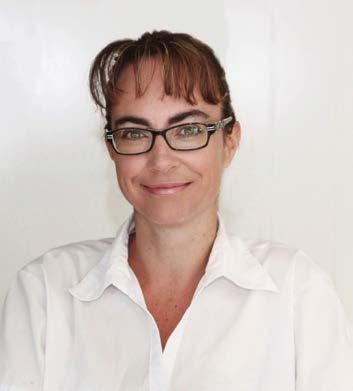
If you have diabetes, you are not alone! You join over 300,000 kiwis with this condition. It’s a scary fact that type 2 diabetes is expected to increase by 70 to 90 percent over the next 20 years!
So what exactly is type 2 diabetes? Type 2 diabetes is a condition where the body either becomes resistant to insulin or doesn’t produce enough of it. Insulin is a hormone that helps your body use sugar (glucose), fat, and proteins for energy. When your body can’t use insulin properly, blood sugar levels rise, which can lead to serious health problems over time. Unlike Type 1 diabetes, where the body doesn’t produce insulin at all, Type 2 diabetes typically develops gradually and can often be managed effectively with lifestyle changes, medication, and sometimes insulin.
There are several risk factors for developing Type 2 diabetes. The most significant include:
Being overweight:
• Age: (the risk increases with age, particularly after 45.)
• Family history
• Physical inactivity
• Poor diet
• With proper management, Type 2 diabetes can be controlled, and complications such as heart disease, nerve damage, and kidney problems can be prevented. Managing Type 2 diabetes typically involves a combination of lifestyle changes, medications, and monitoring blood sugar levels. Here are the main approaches:
Lifestyle Changes:
Healthy eating: A balanced diet is essential for controlling blood sugar.
• Focus on eating healthy, while limiting sugary foods and refined carbs. Exercise: Regular physical activity helps the body use insulin more
• effectively. Aim for at least 150 minutes of moderate exercise per week Weight management: Losing excess weight can help improve insulin
• sensitivity and lower blood sugar levels. Ask about our Unichem Manly Weightloss Clinic!
Prescription Medications:
Oral medications: Several different classes of medication are available
• that help lower your blood sugar in various ways.
• insulin production is insufficient.
Insulin: In some cases, insulin therapy may be necessary if the body’s
Other injectable medications: These can help manage blood sugar
• levels by enhancing the body’s ability to use insulin or decreasing sugar production.
Blood Sugar Monitoring: Regularly checking blood sugar levels is crucial to understand how your body responds to treatment and lifestyle changes. You can use an at home monitor to check your blood sugar via a funded device with consumables available on prescription.
Continuous Glucose Monitors have revolutionized blood glucose testing. These devices track your levels throughout the day and night, providing real-time, continuous monitoring of your glucose levels, offering a more detailed picture of how your blood sugar fluctuates compared to traditional fingerstick tests. These are available to purchase from our pharmacy.
By guest speaker Chantal Wright from Dexcom Tuesday 25th March 6:30pm Bookings Essential Phone 09 424 7708
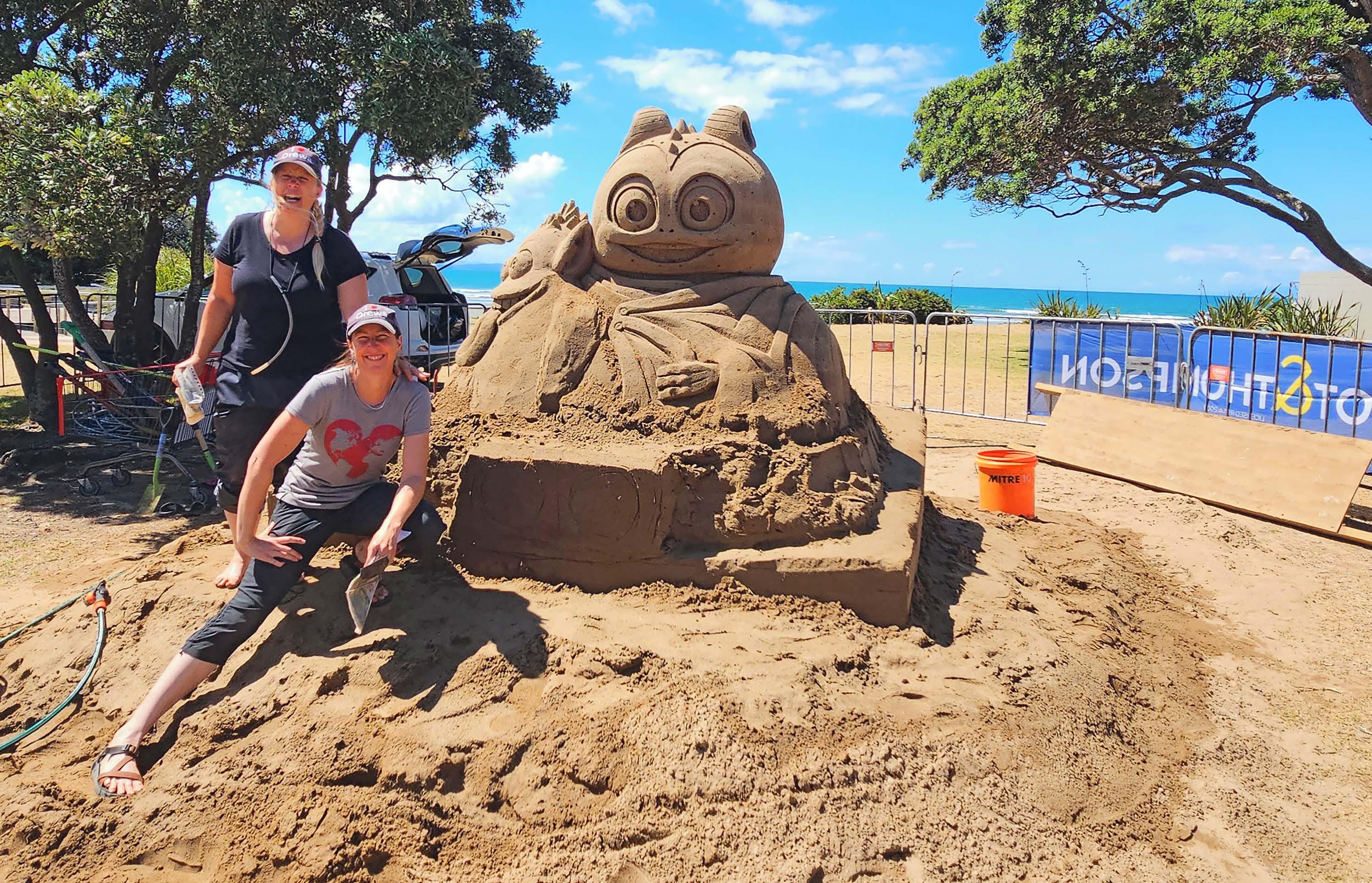
In Good Form from Christchurch made their annual pilgrimage to Ōrewa to delight passersby with their sand sculpture ahead of the sand castle competition.
The event has been a summer highlight since 2014 and this year’s reveal was two ‘Out of this World’ aliens who had crash landed on Moana Reserve. We look forward to next year’s creation from Asheley and Annette from In Good Form and congratulations to the sand castle competition winners.
